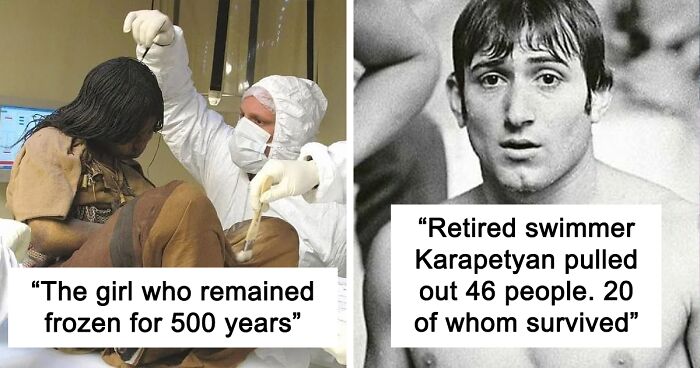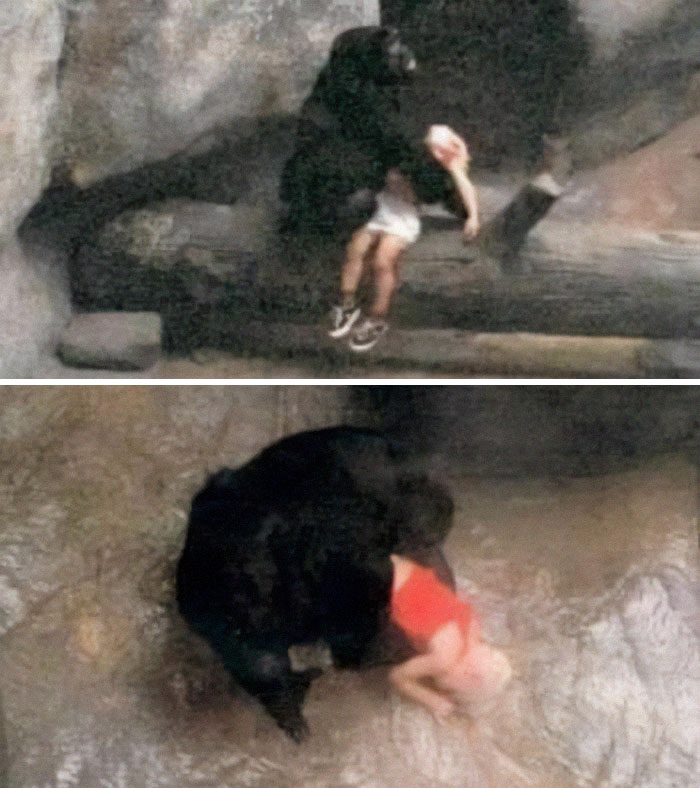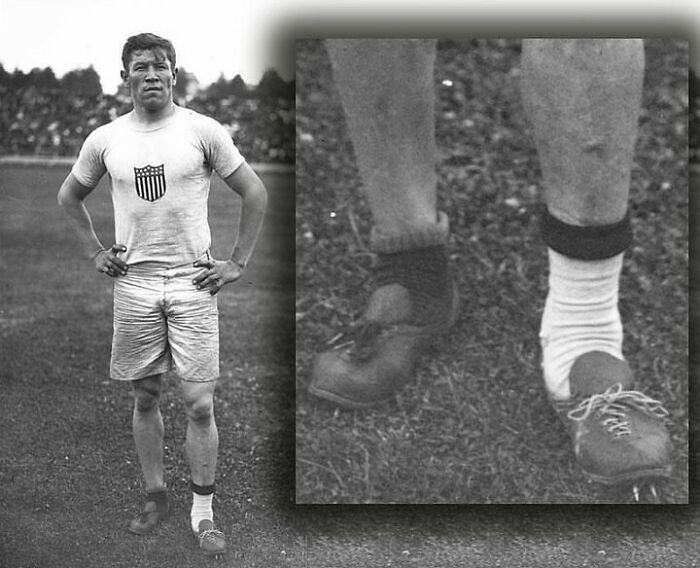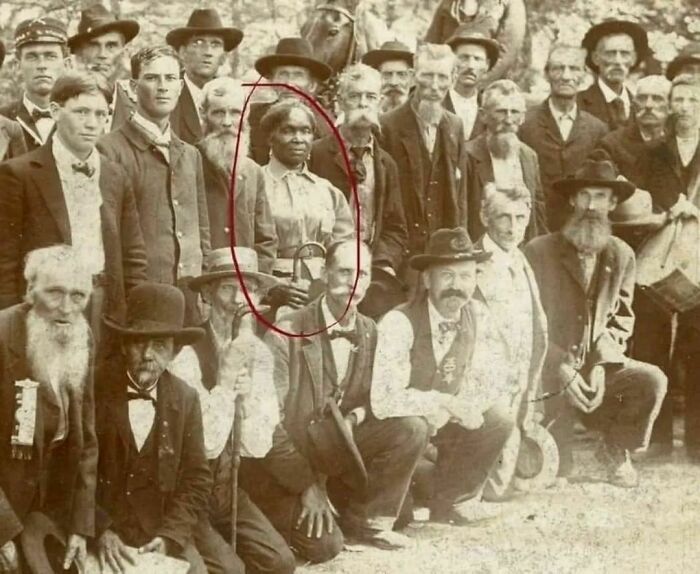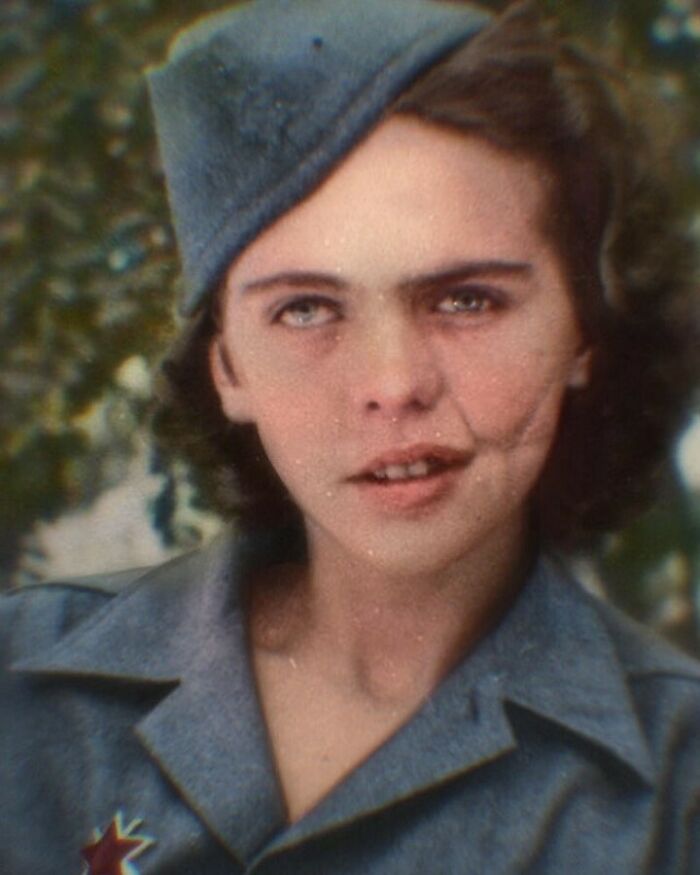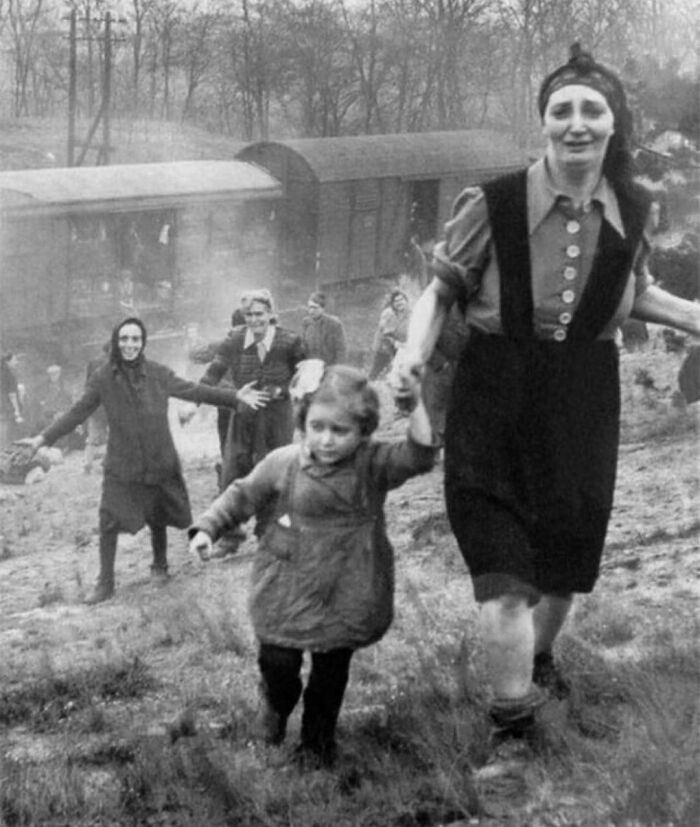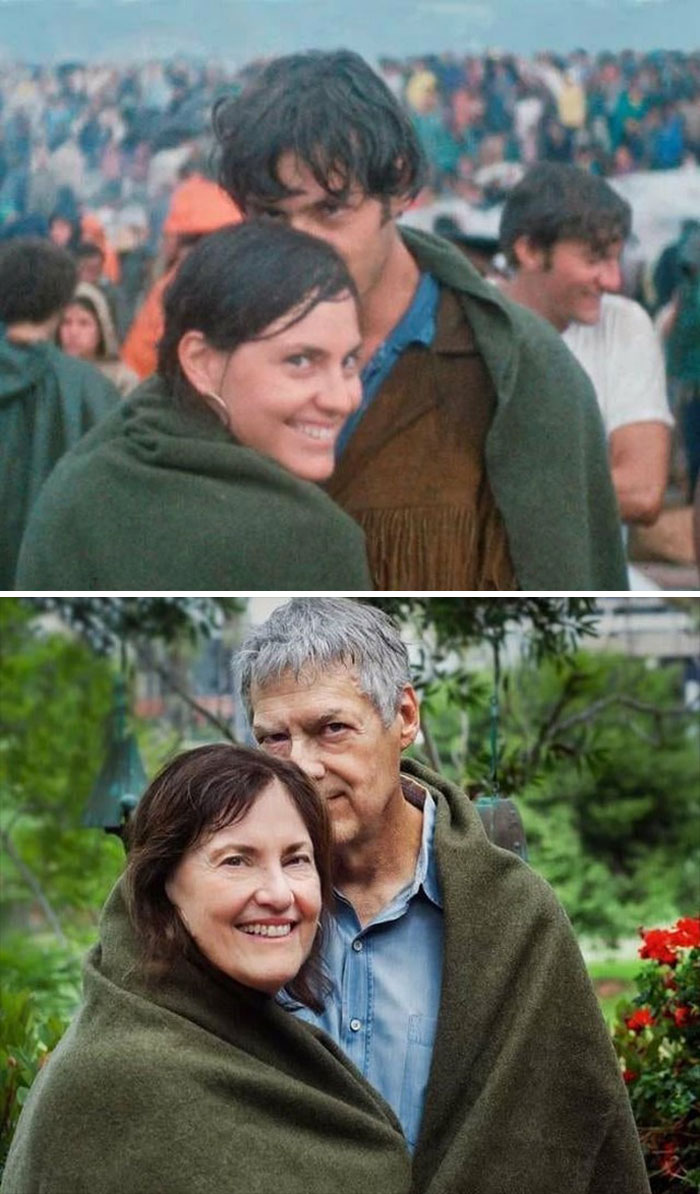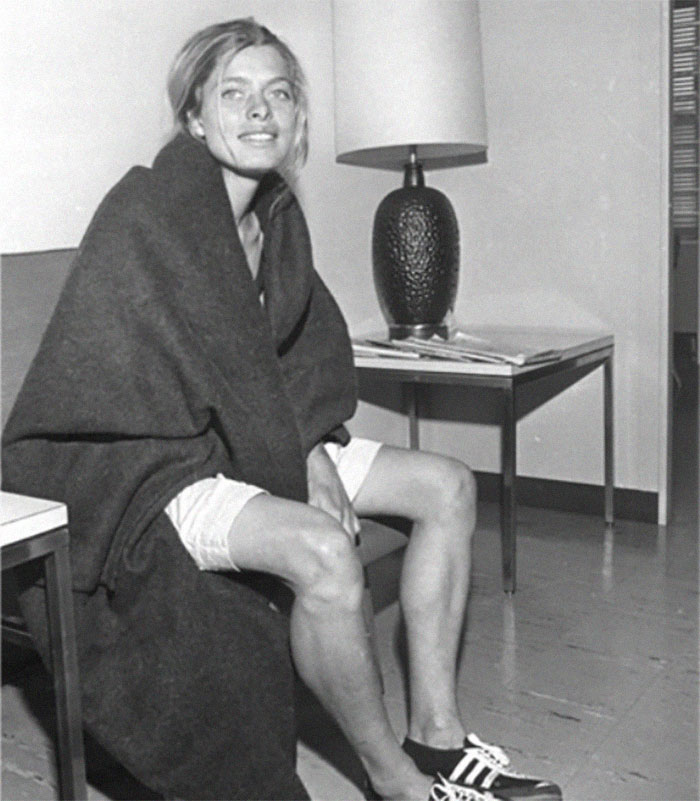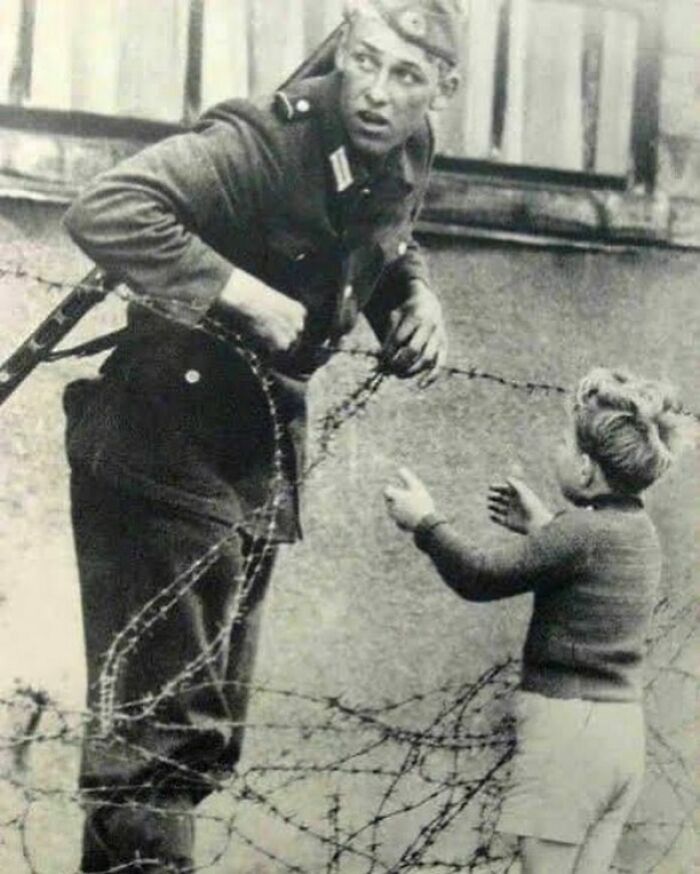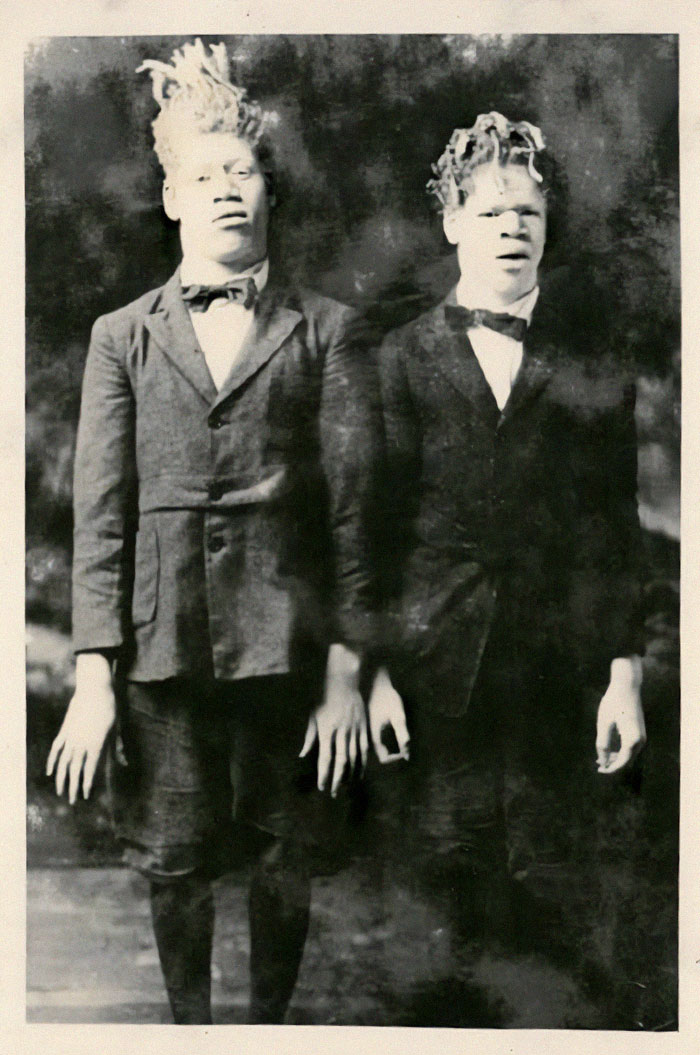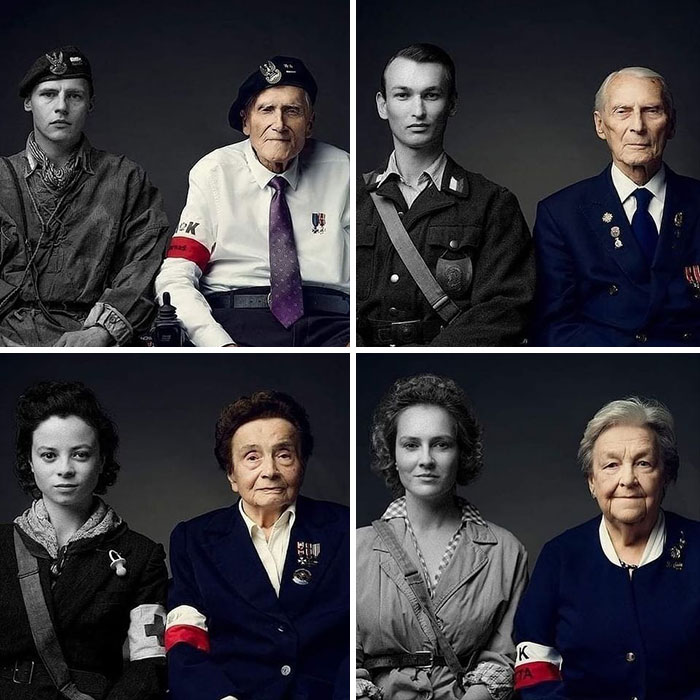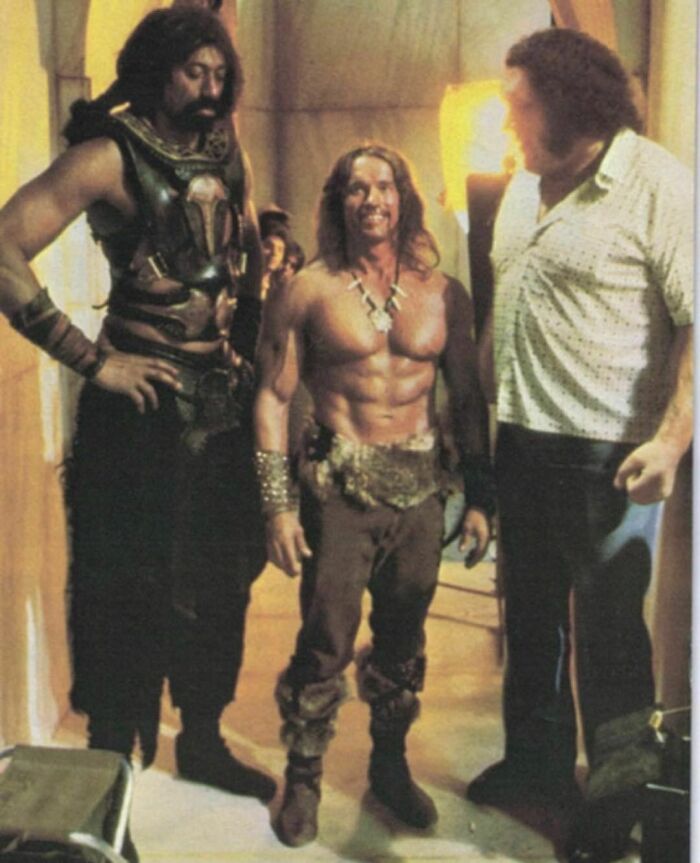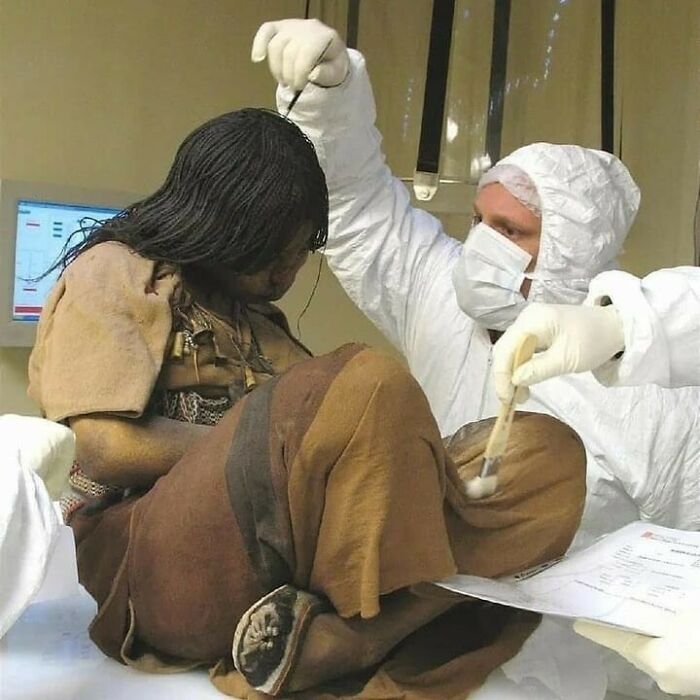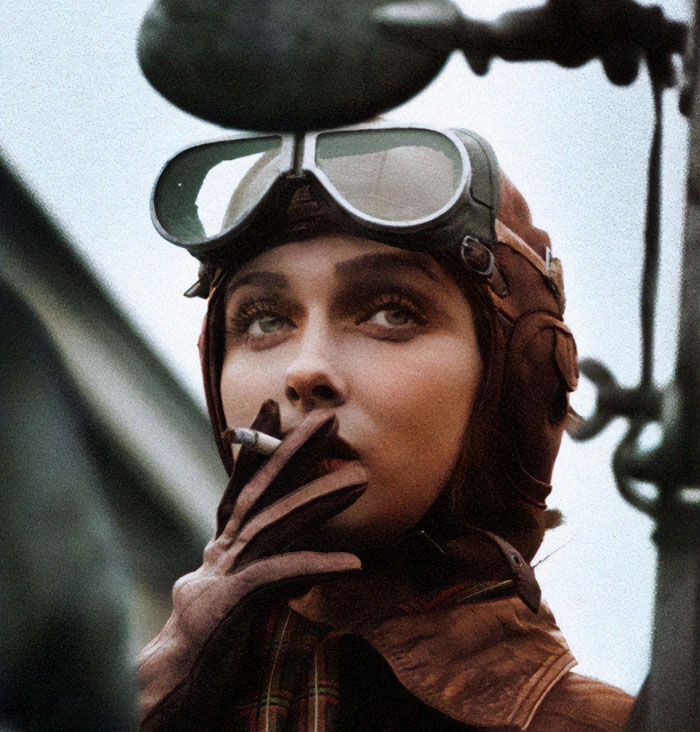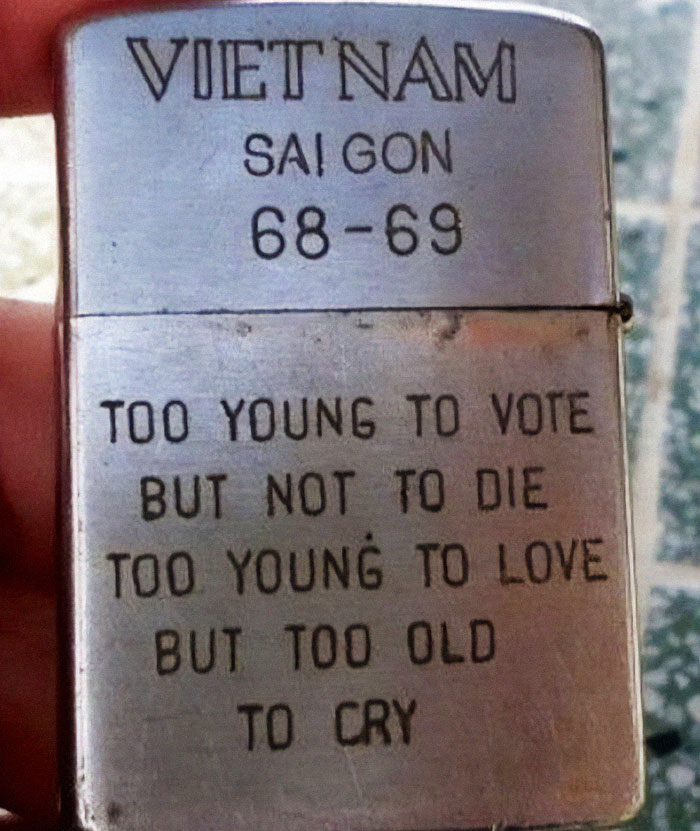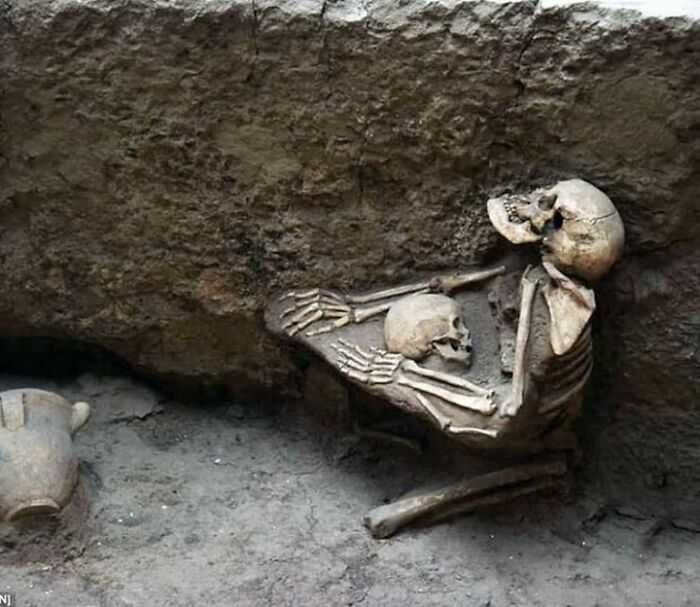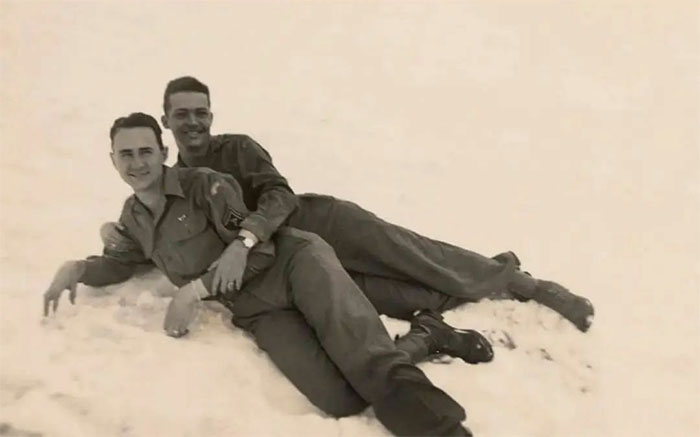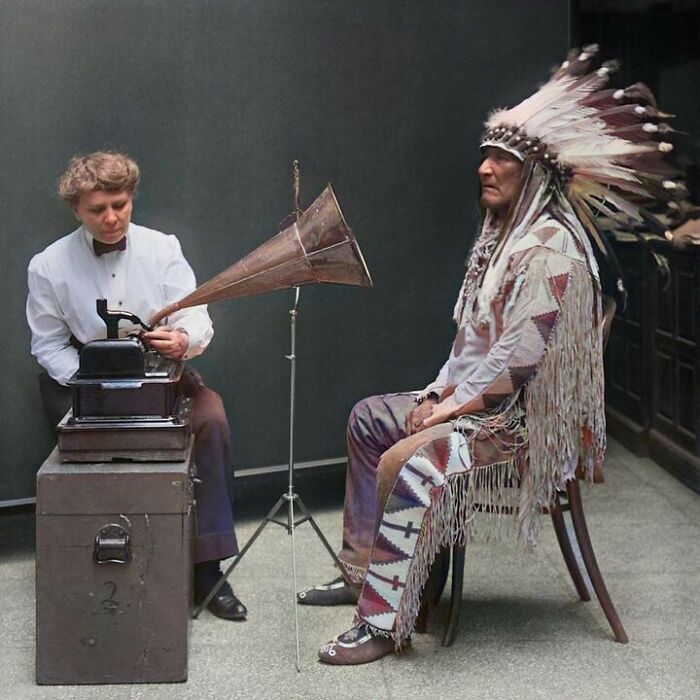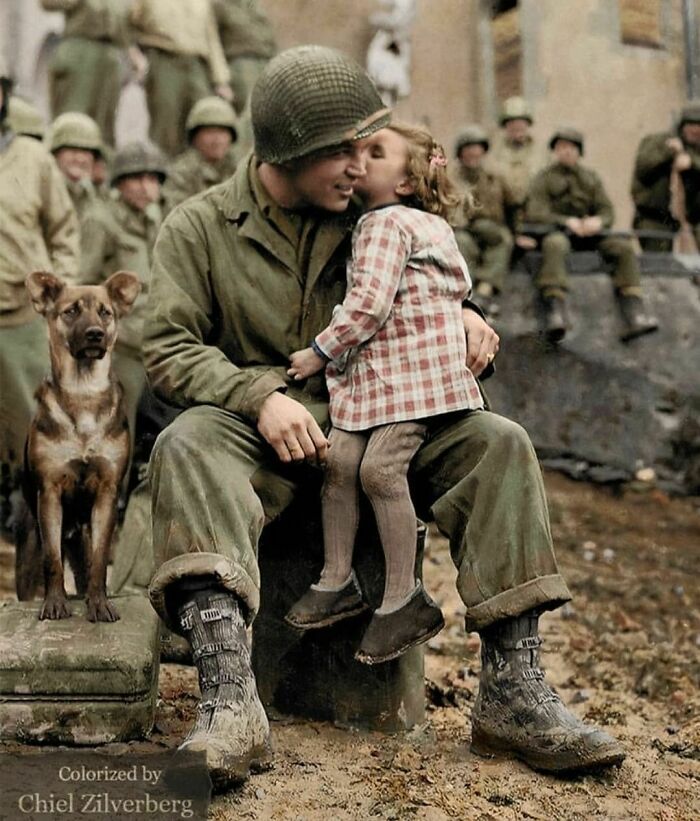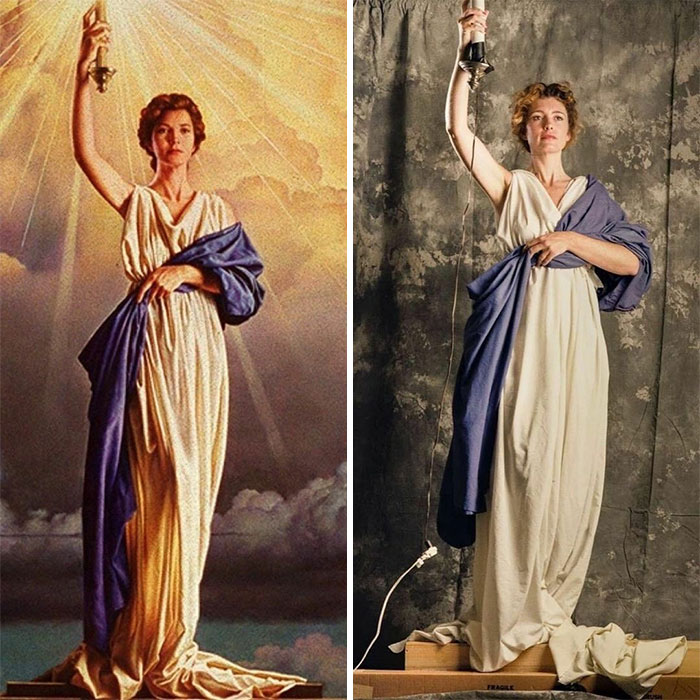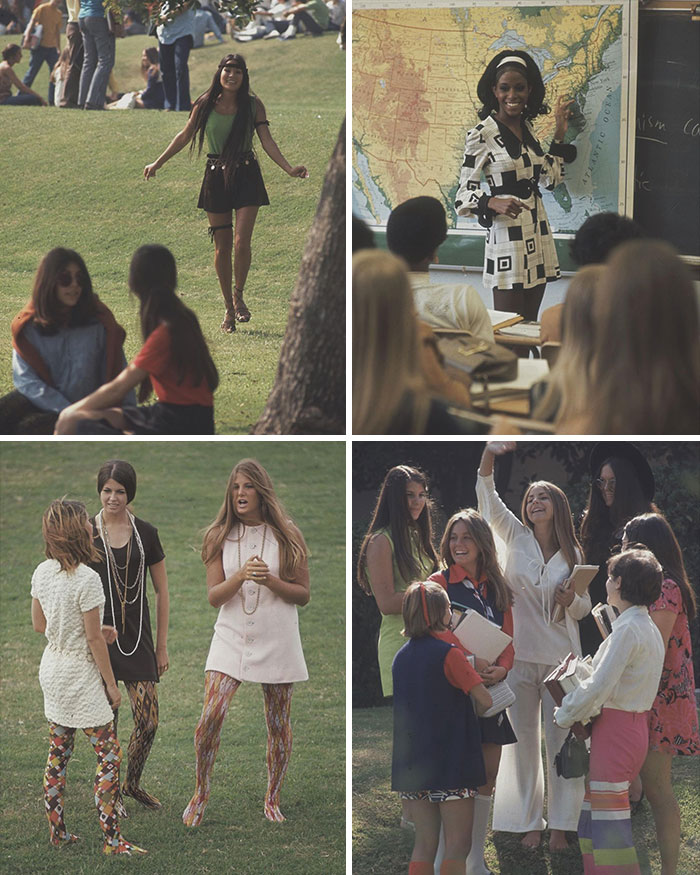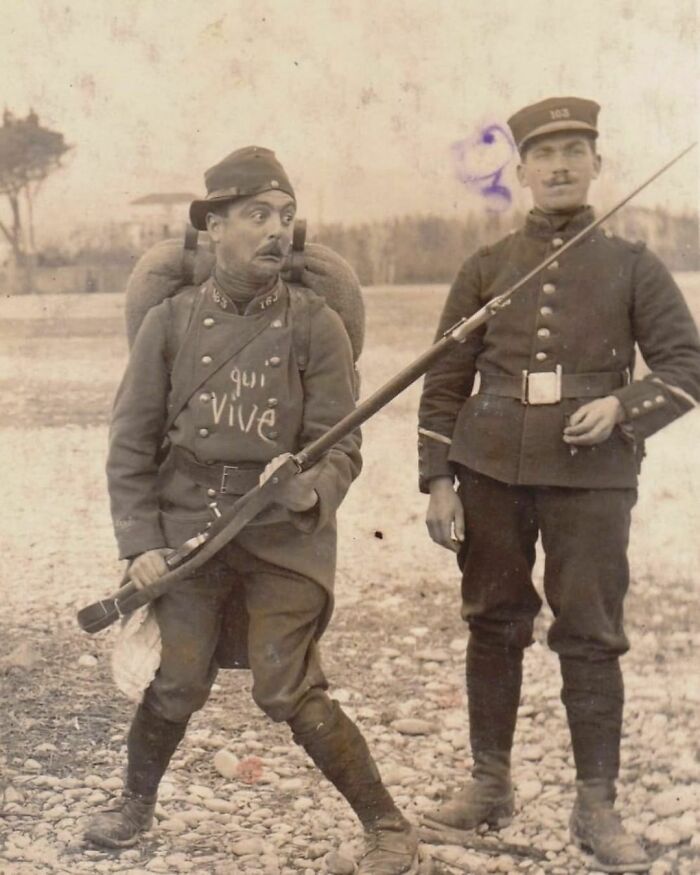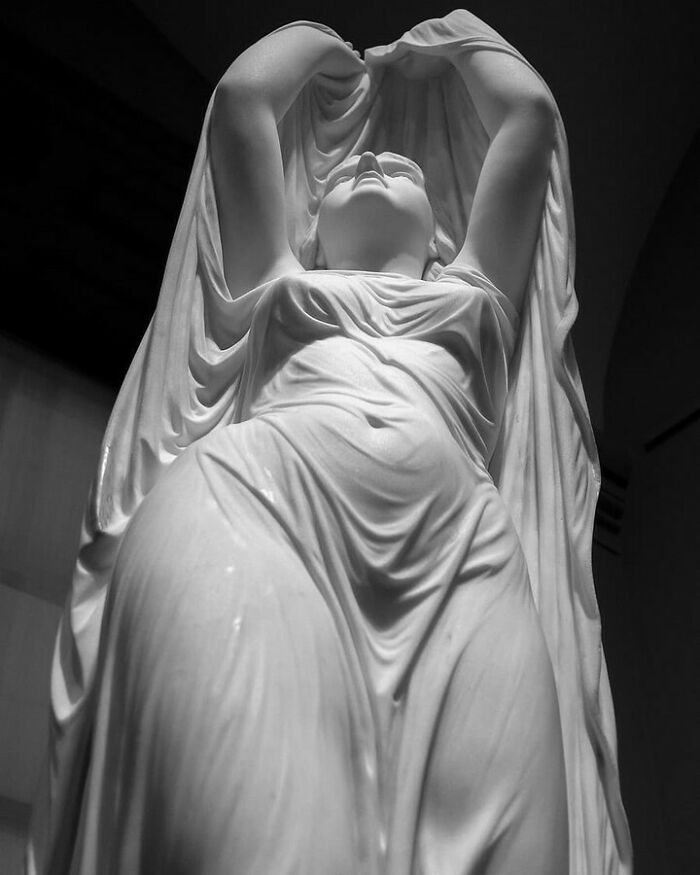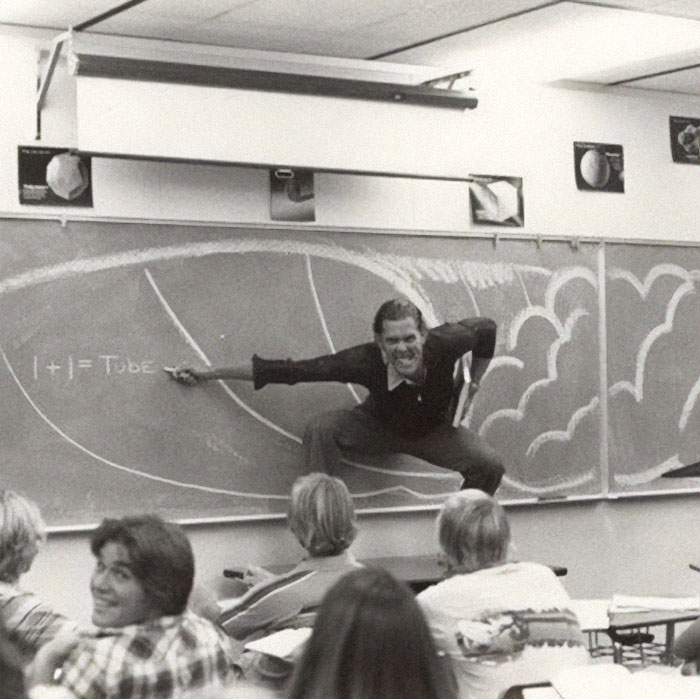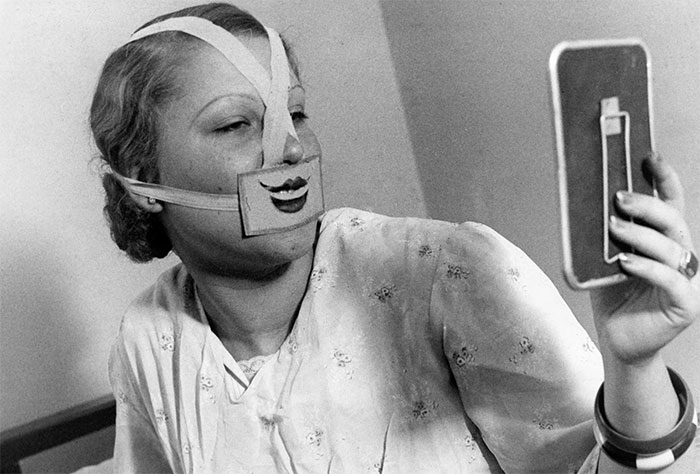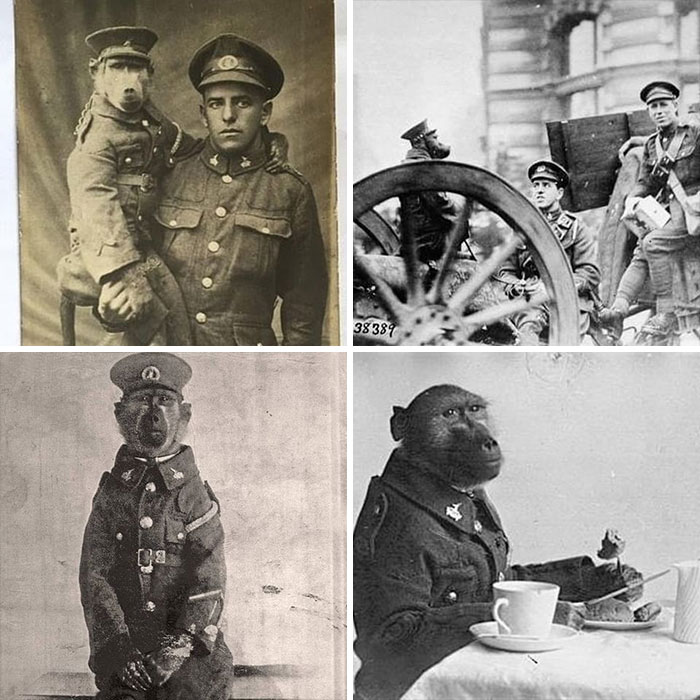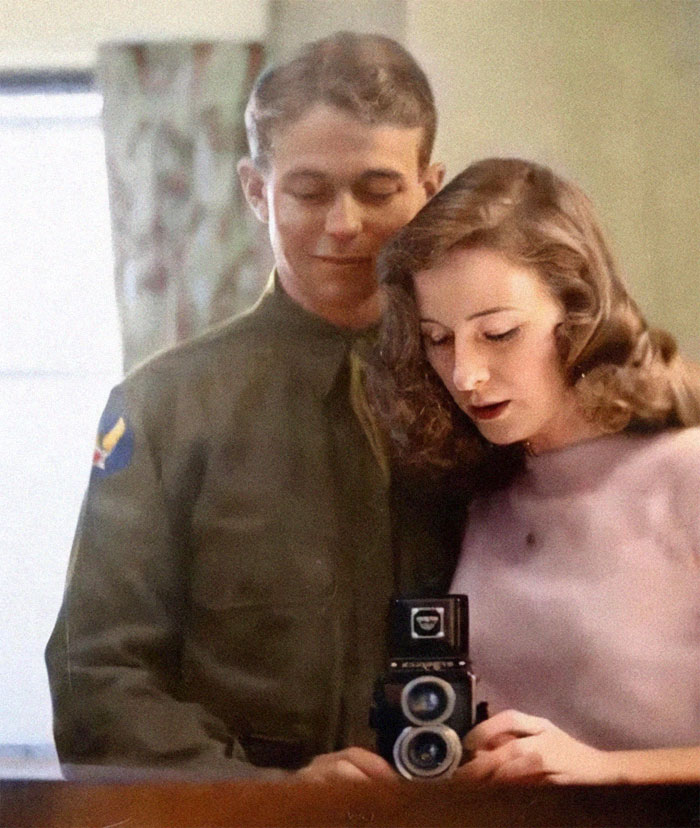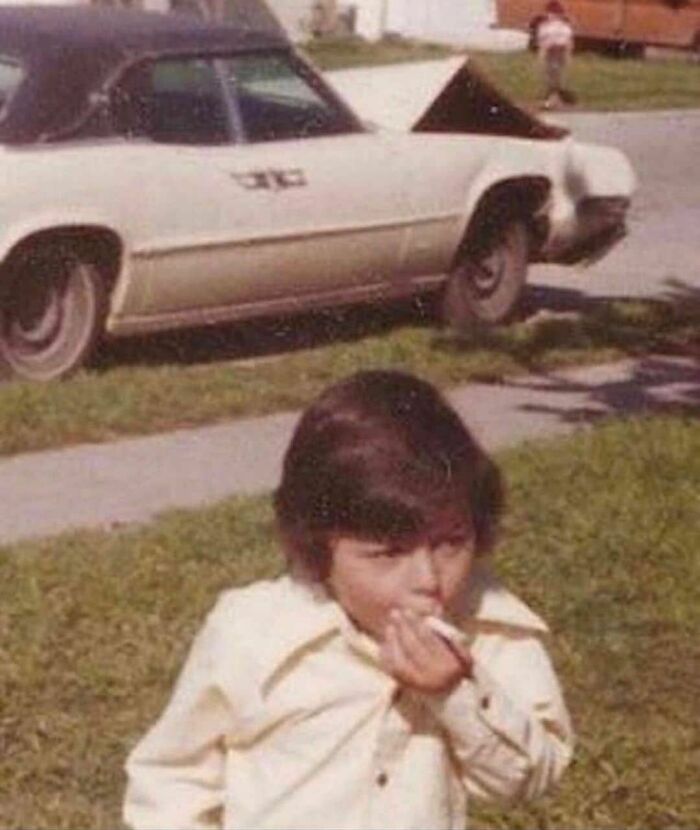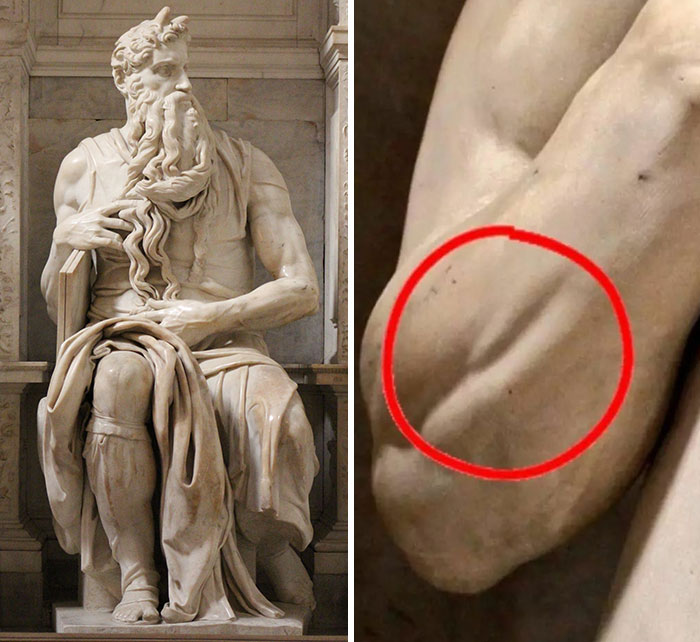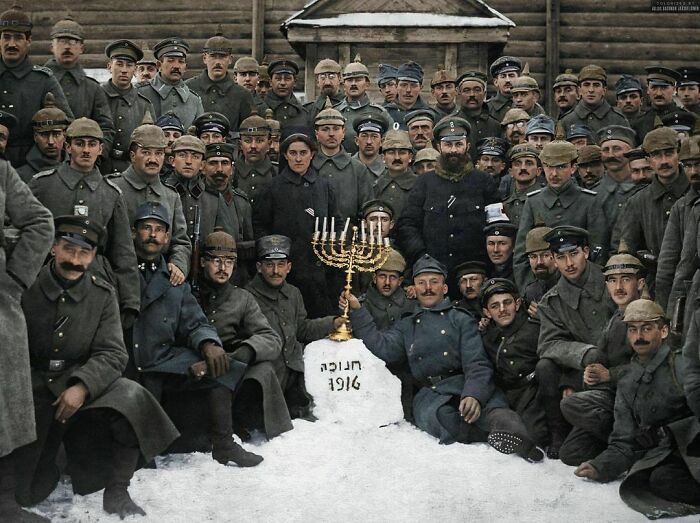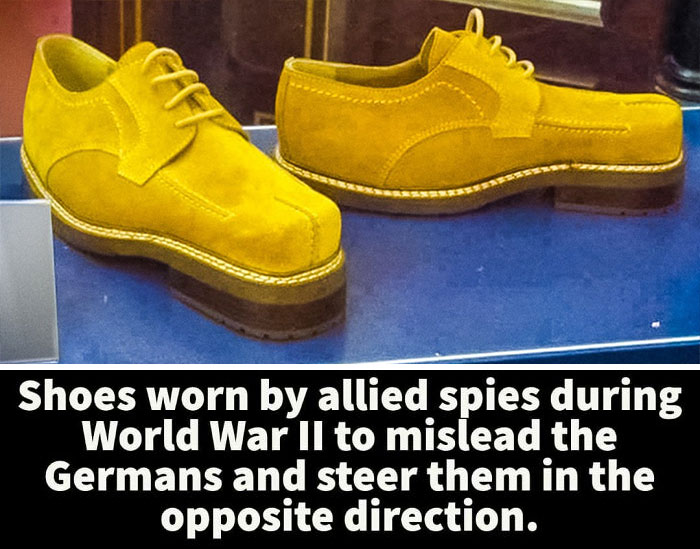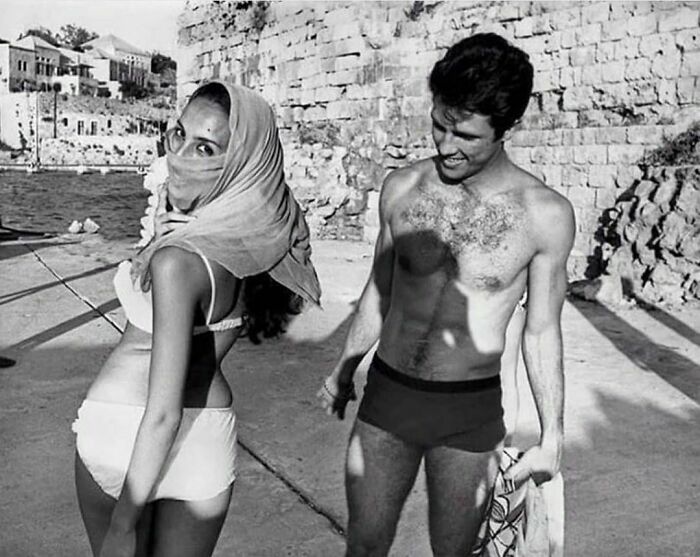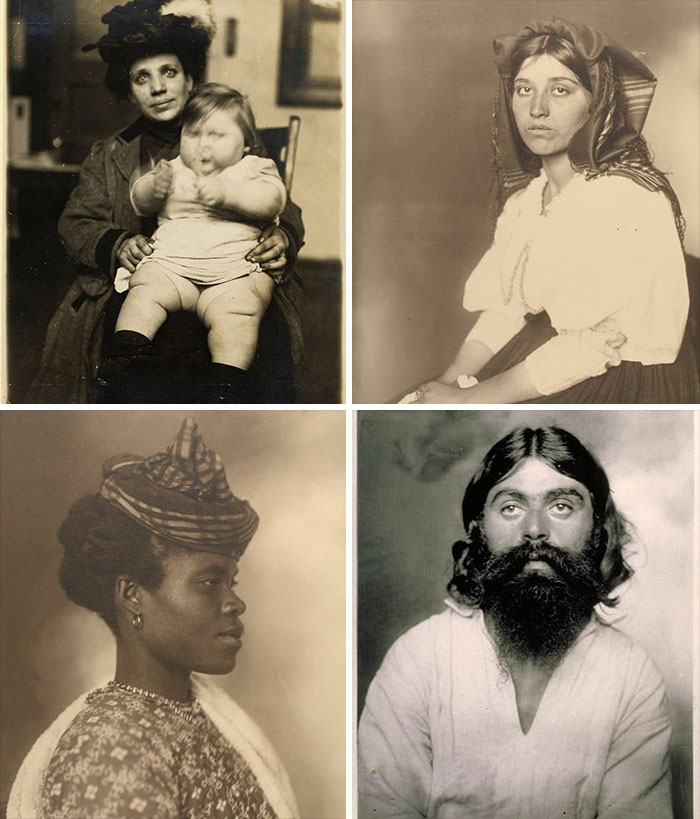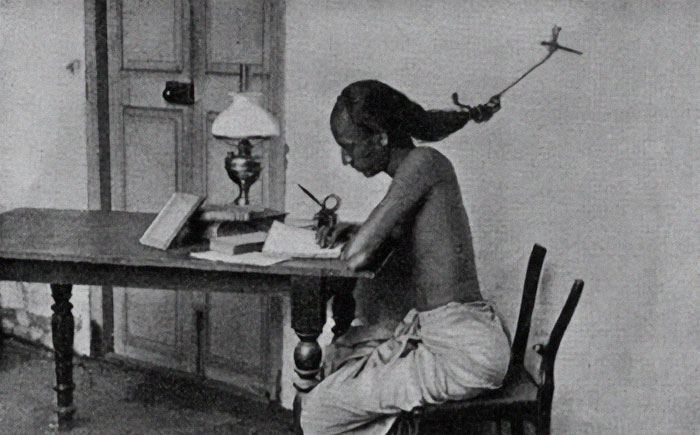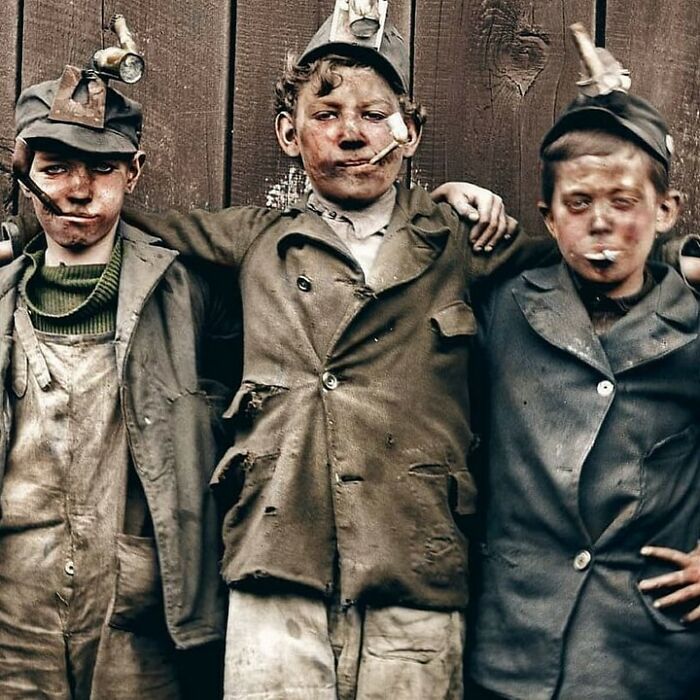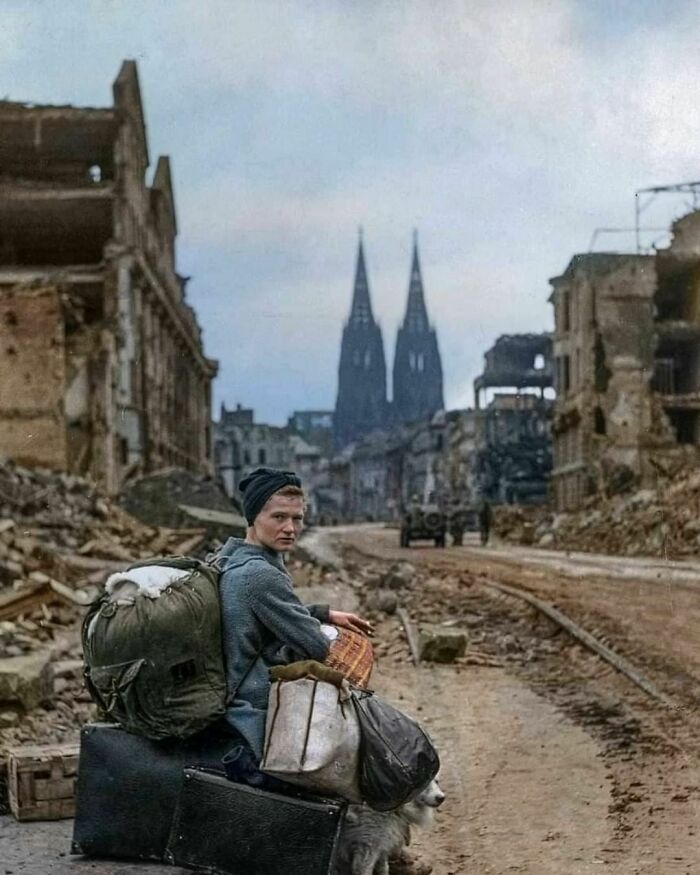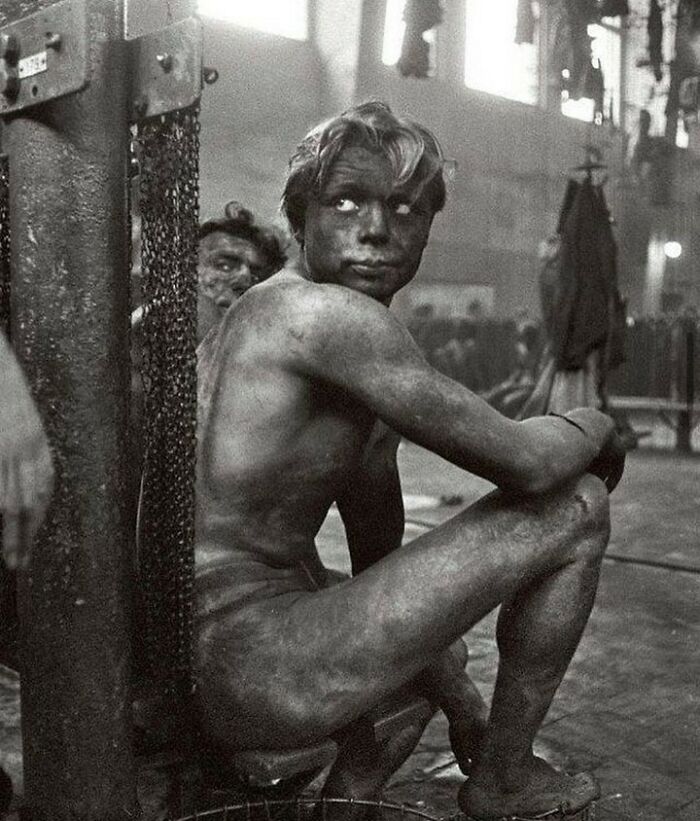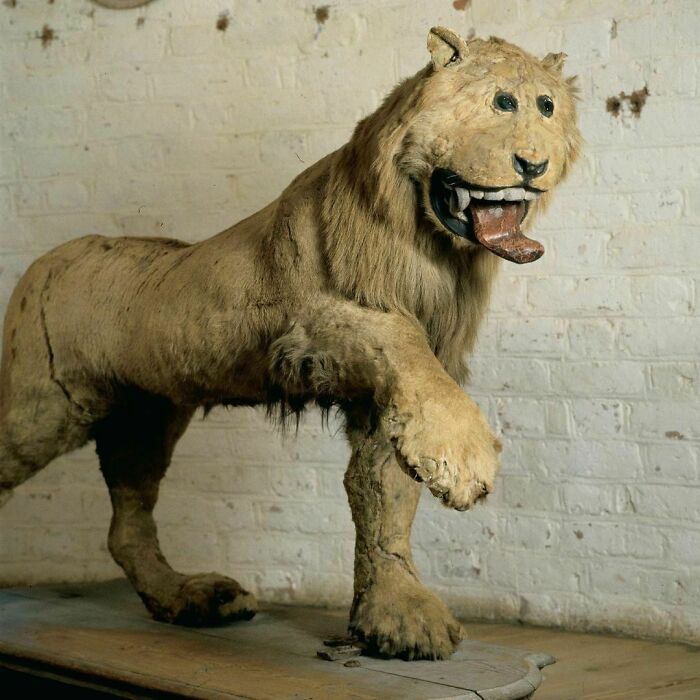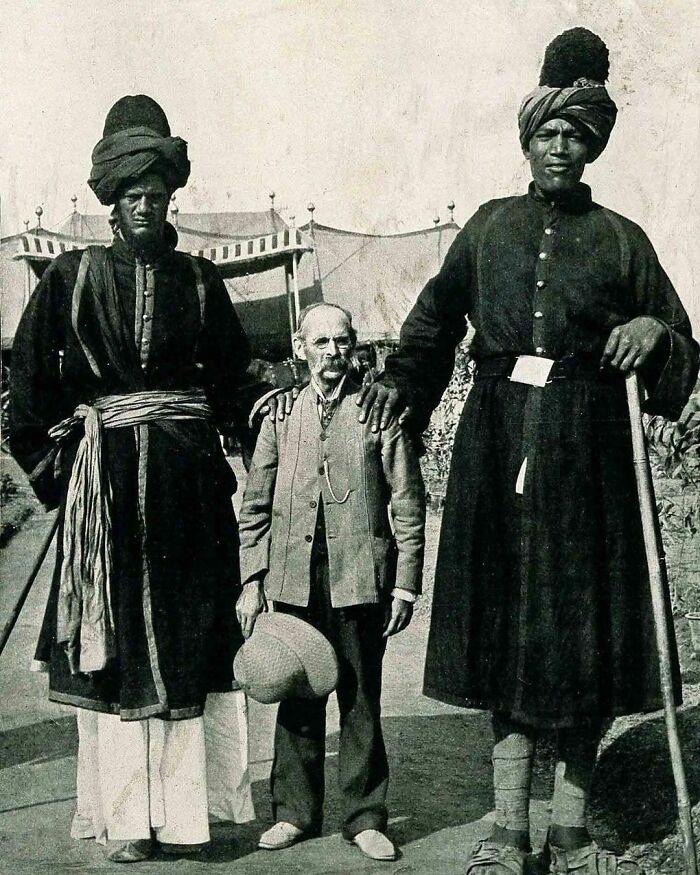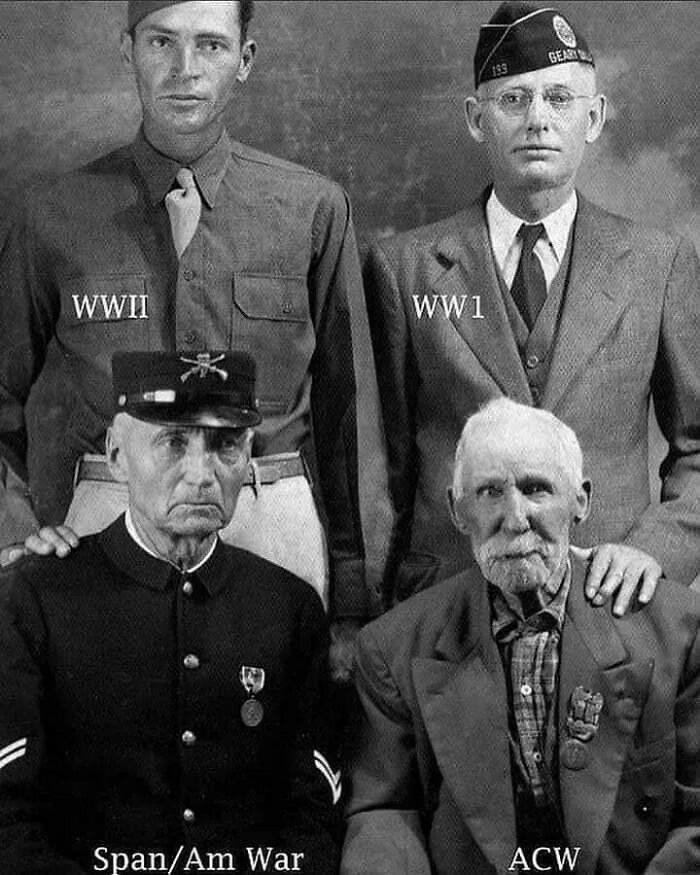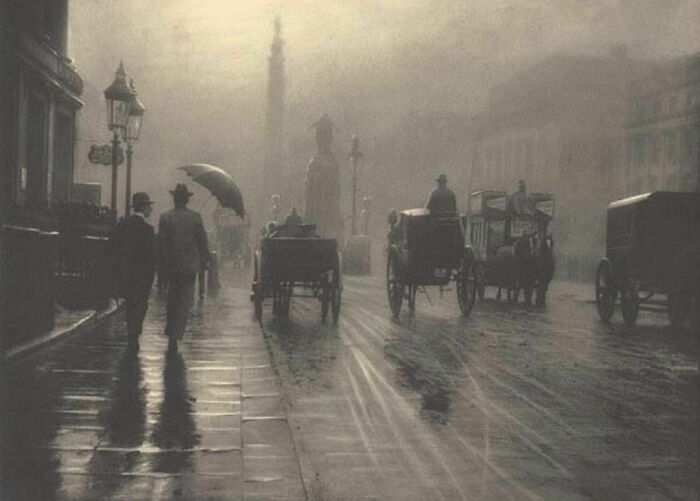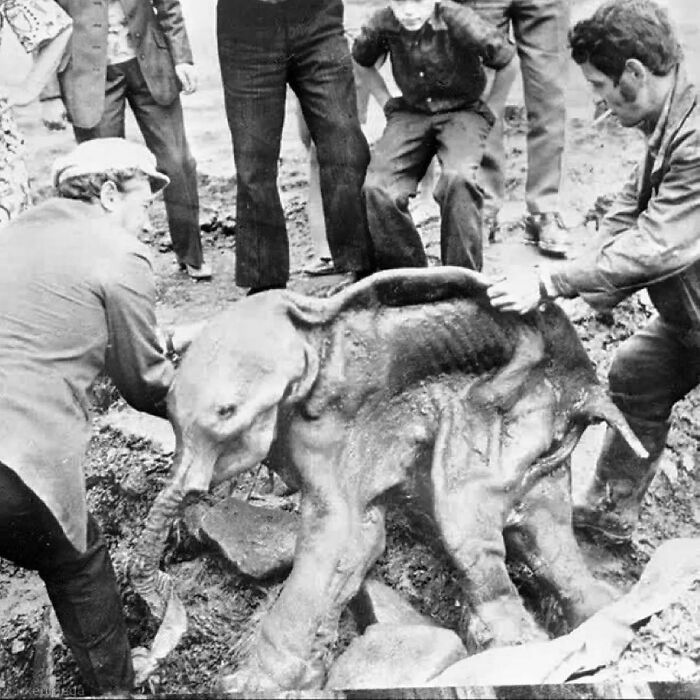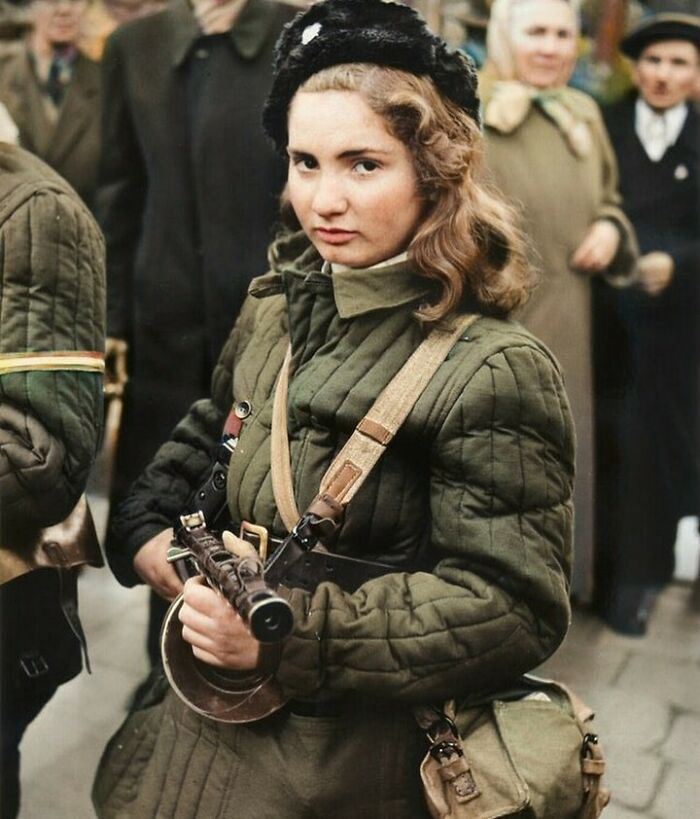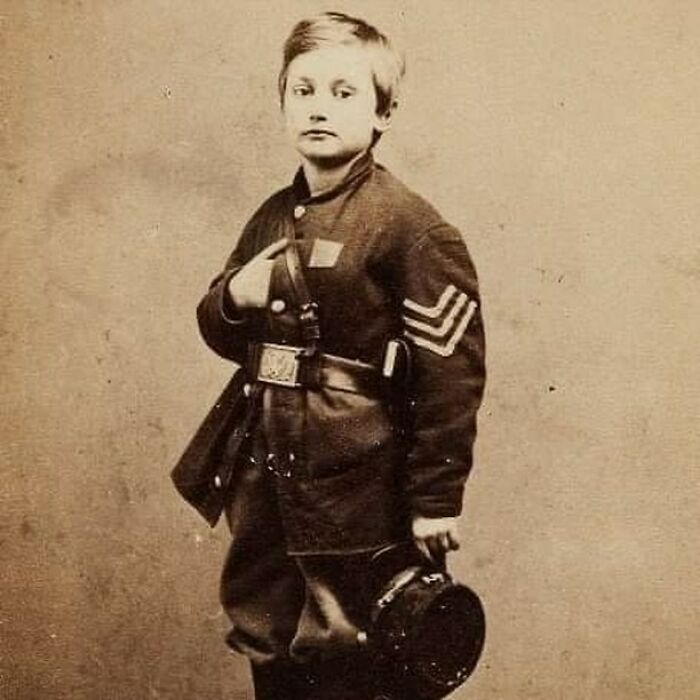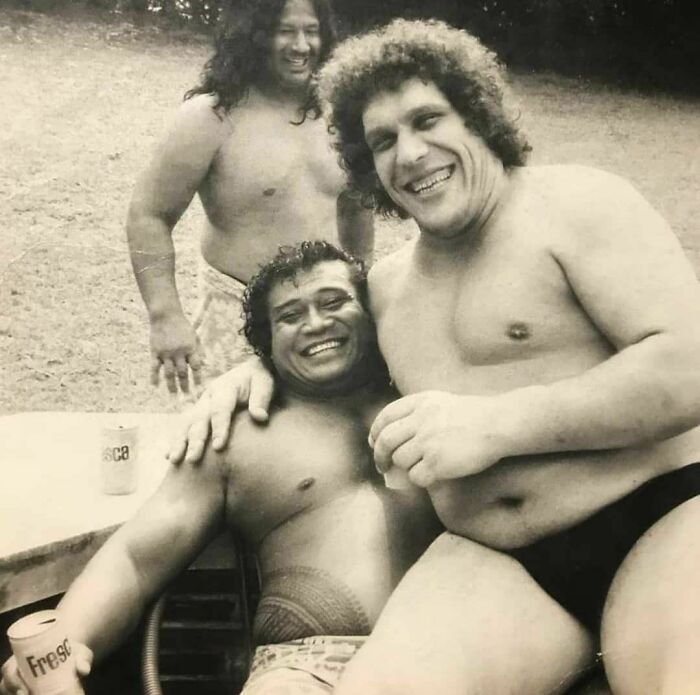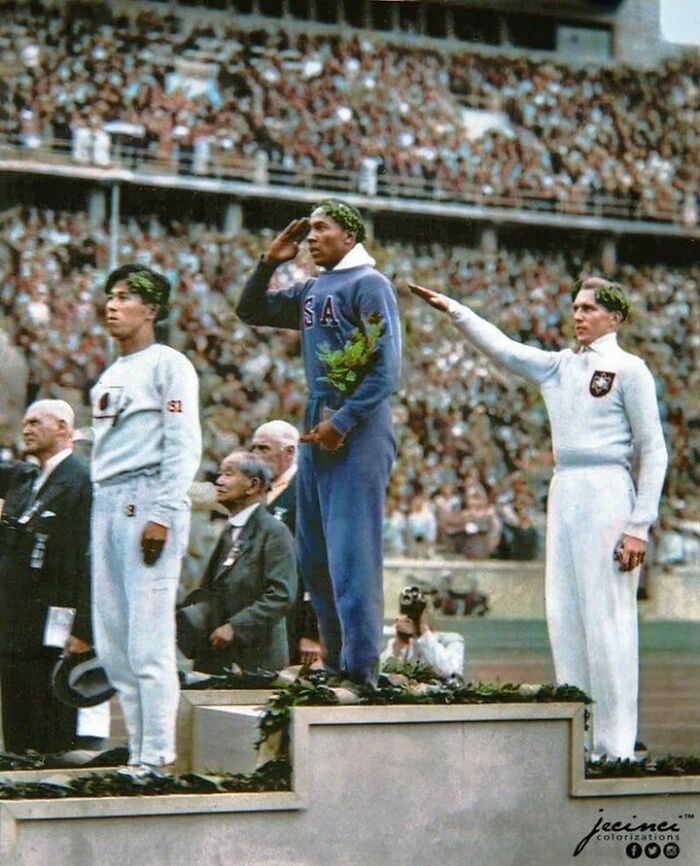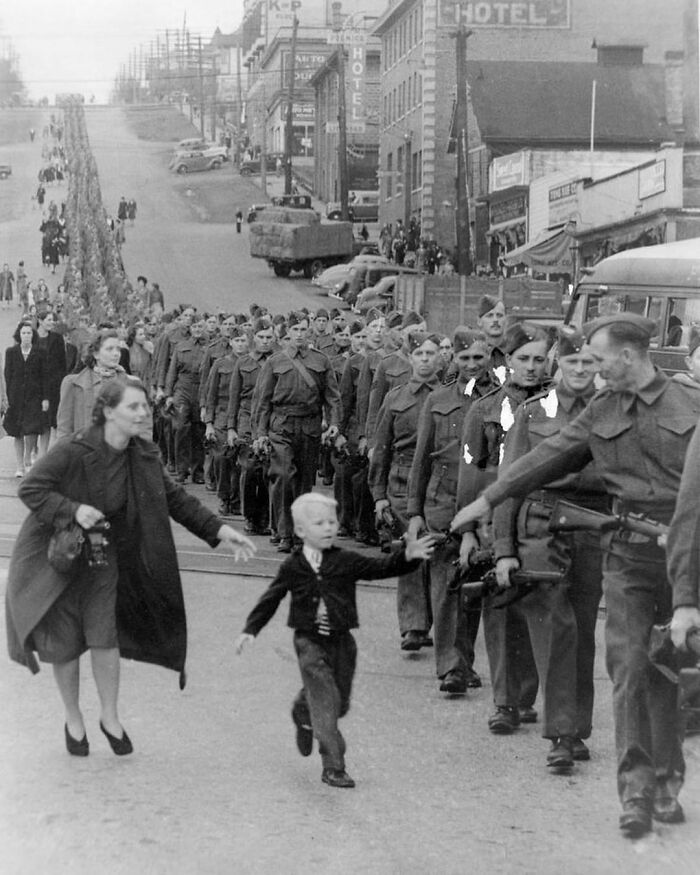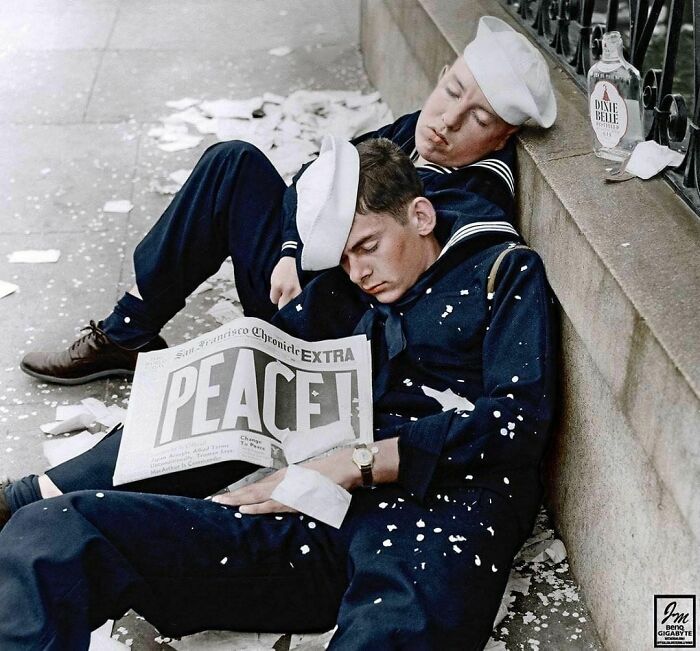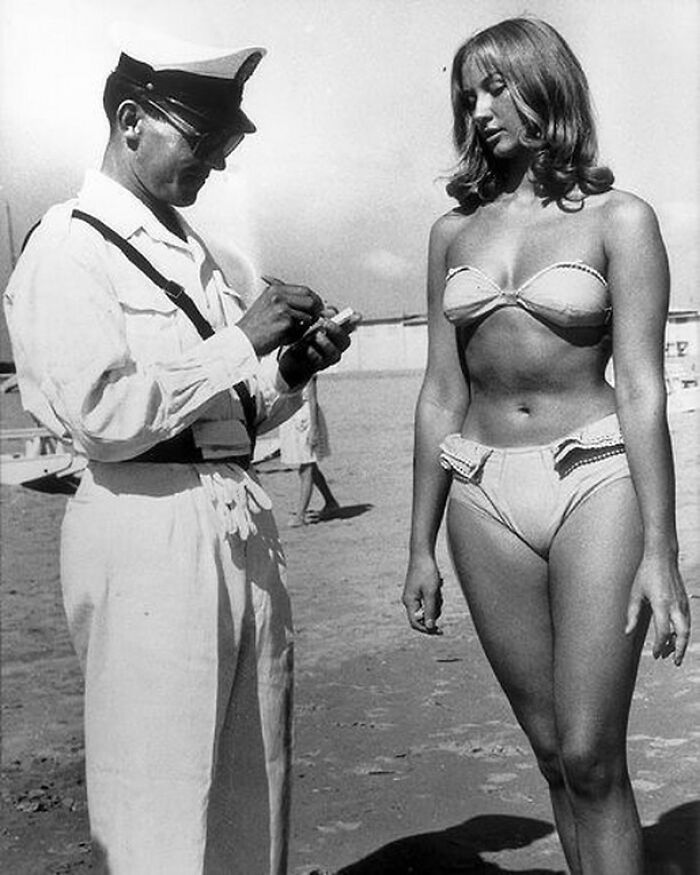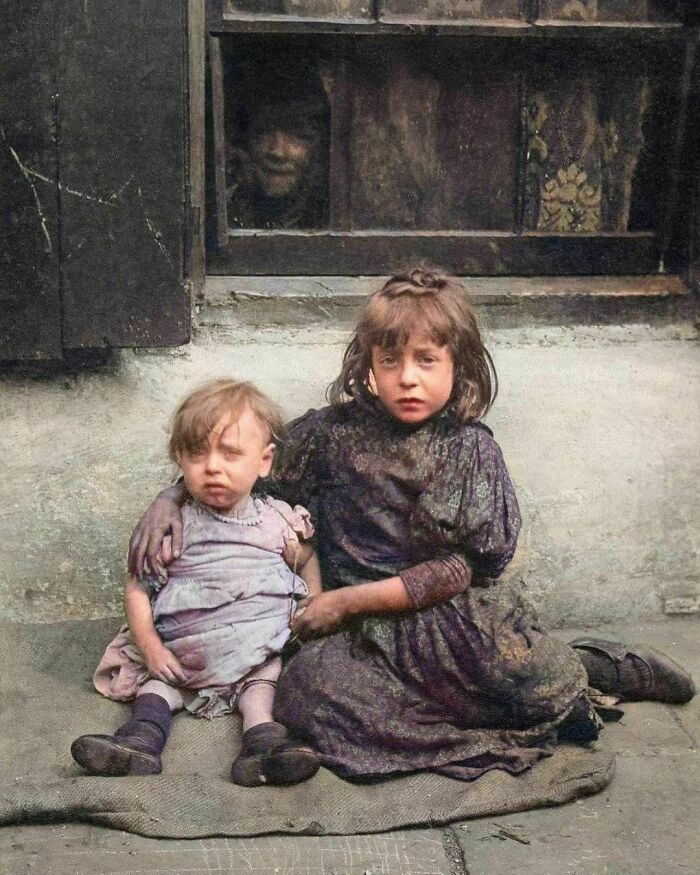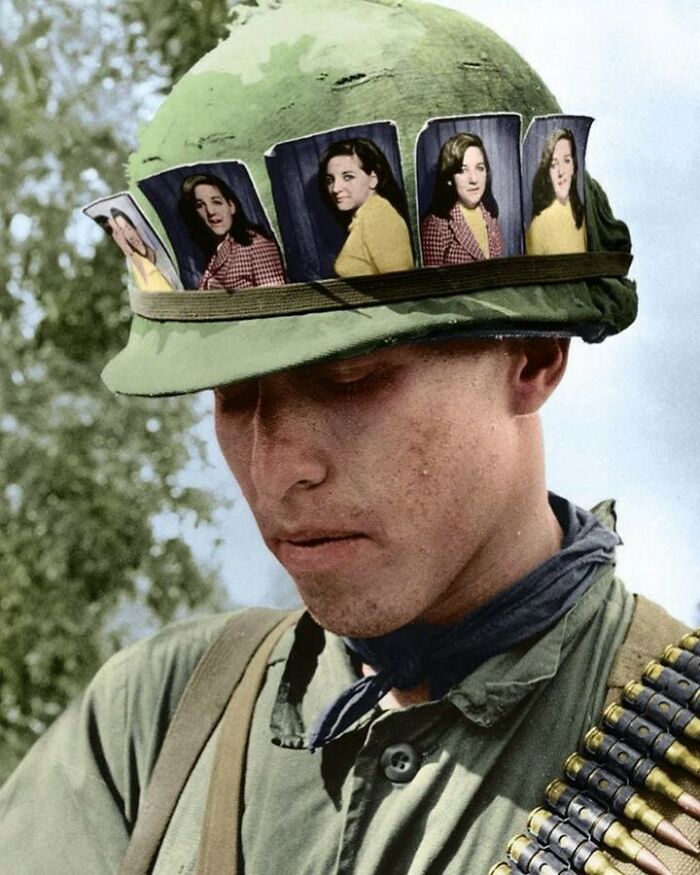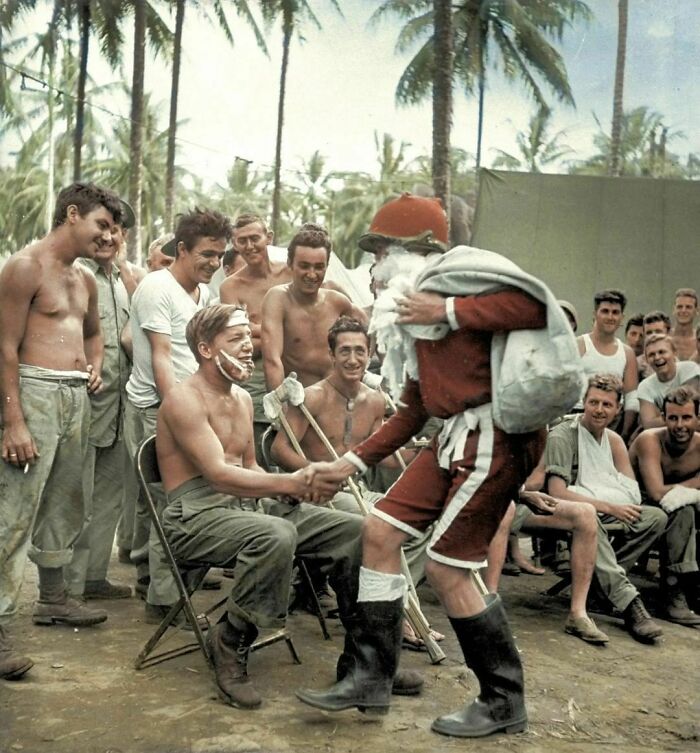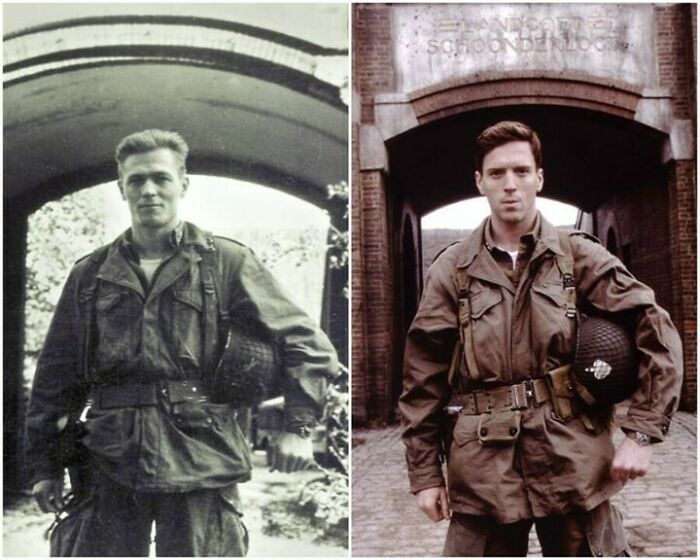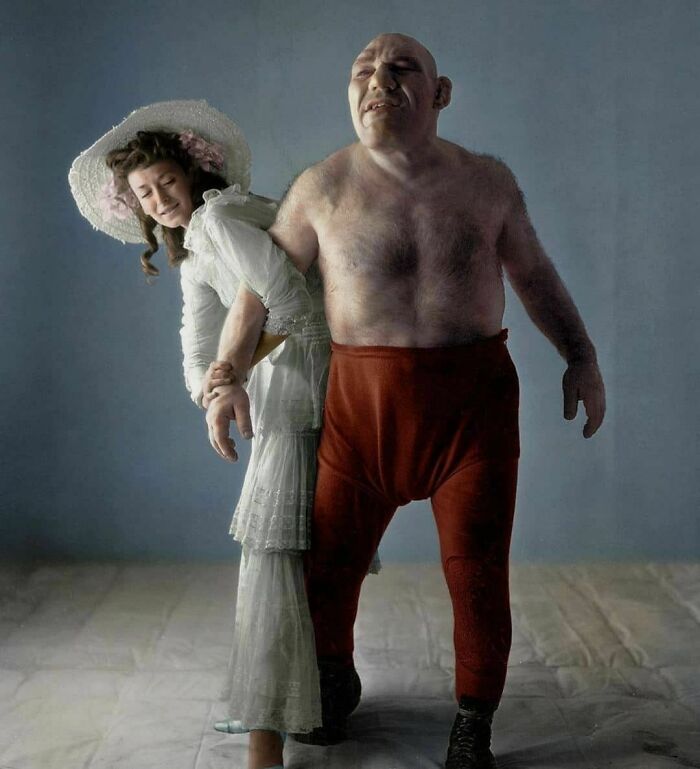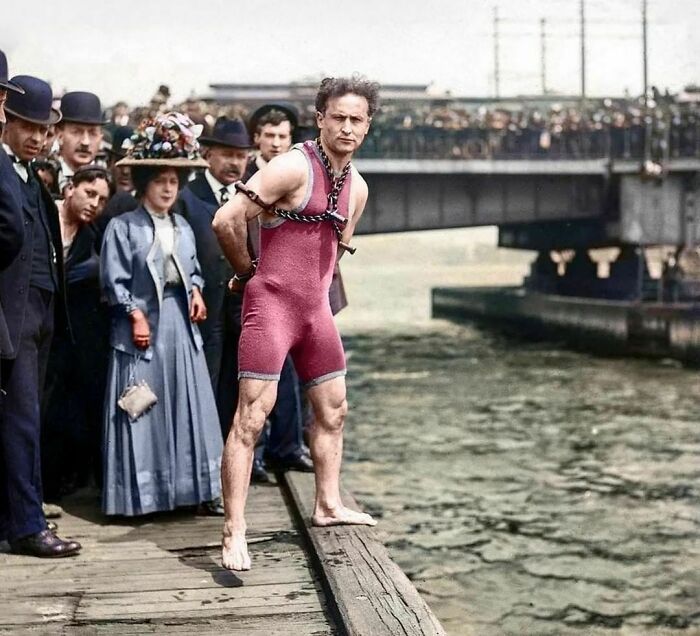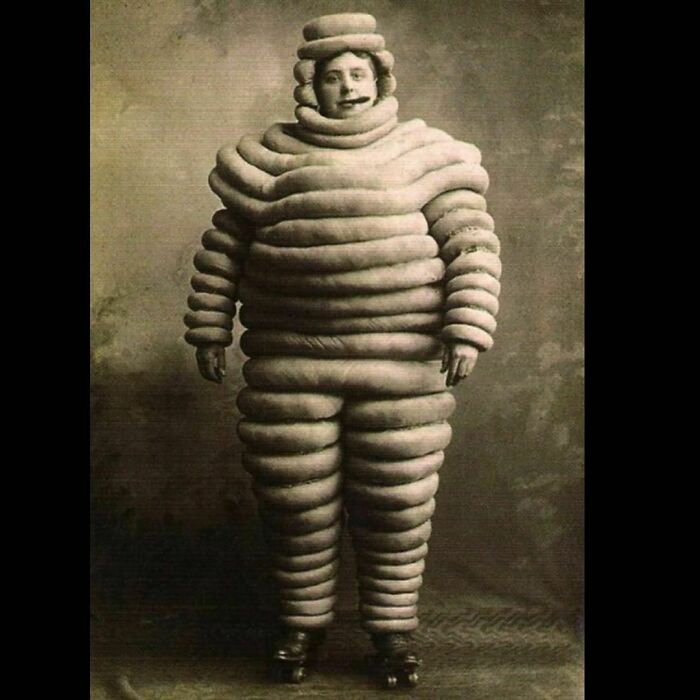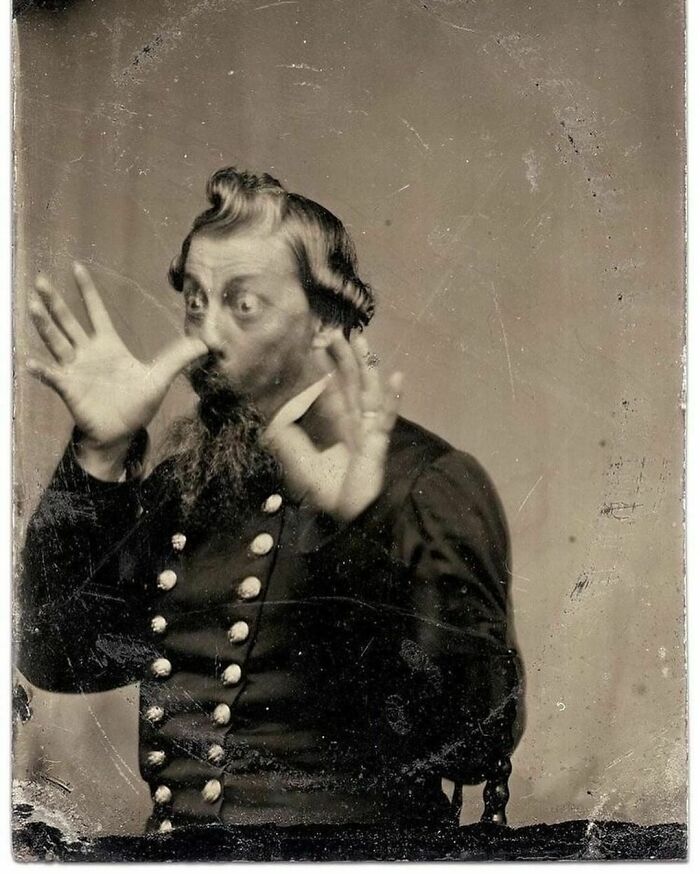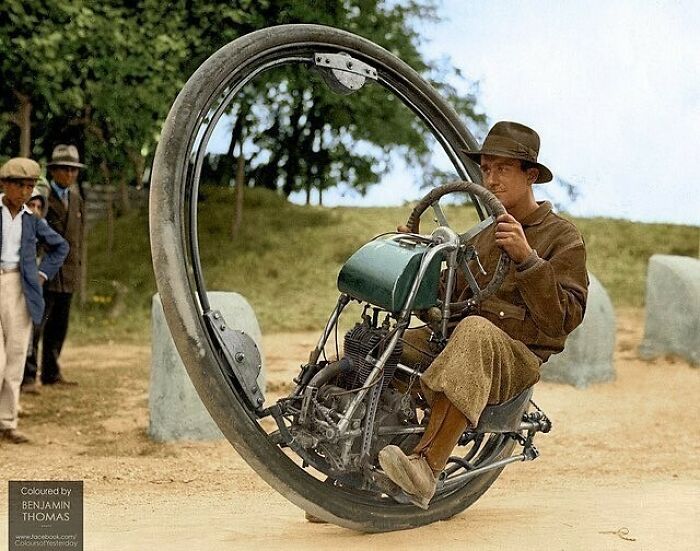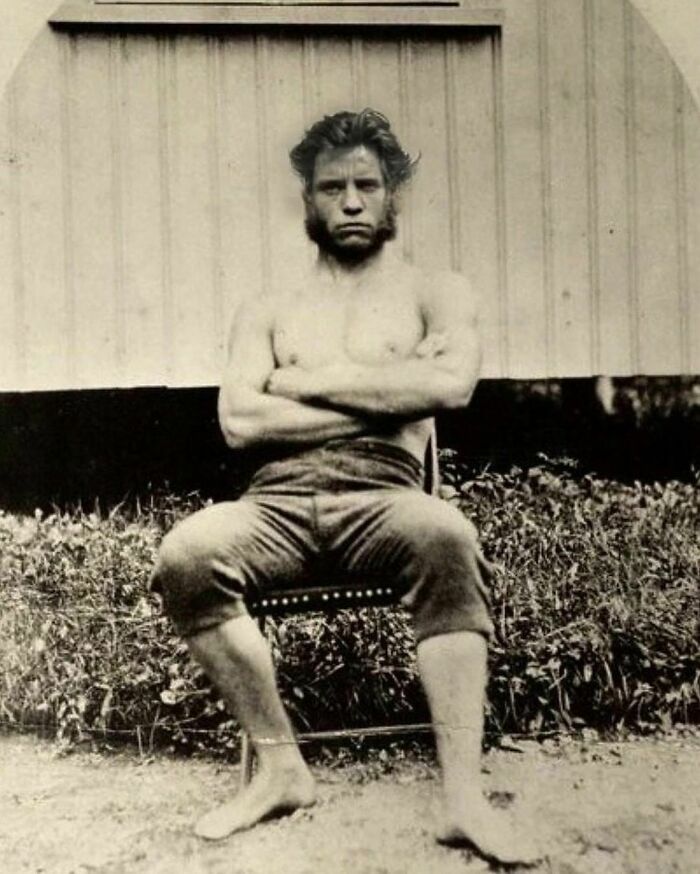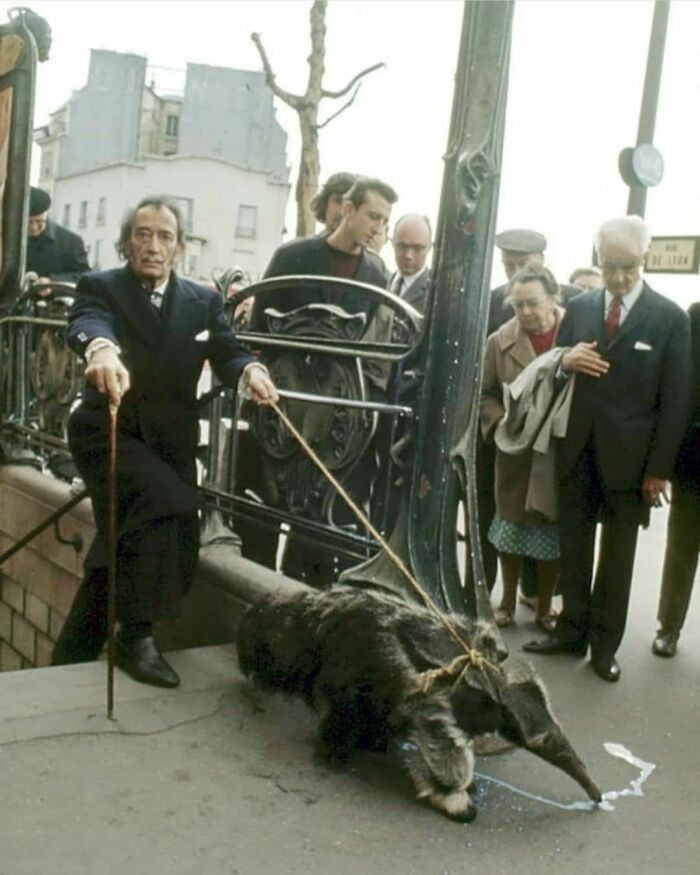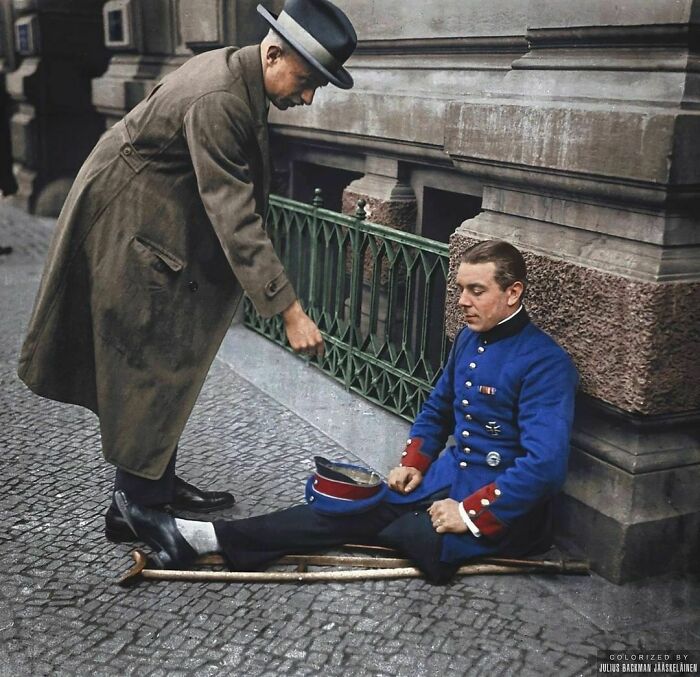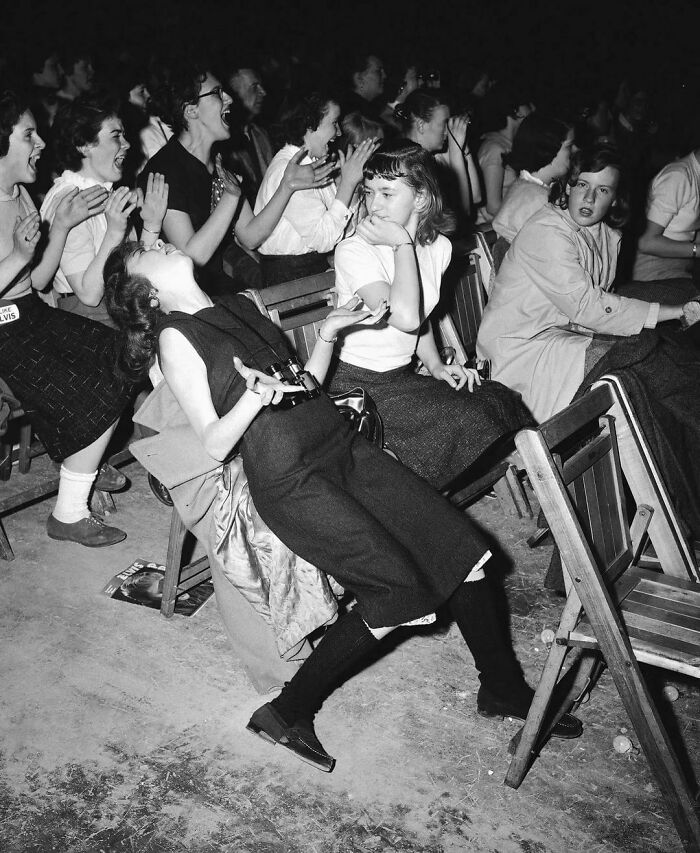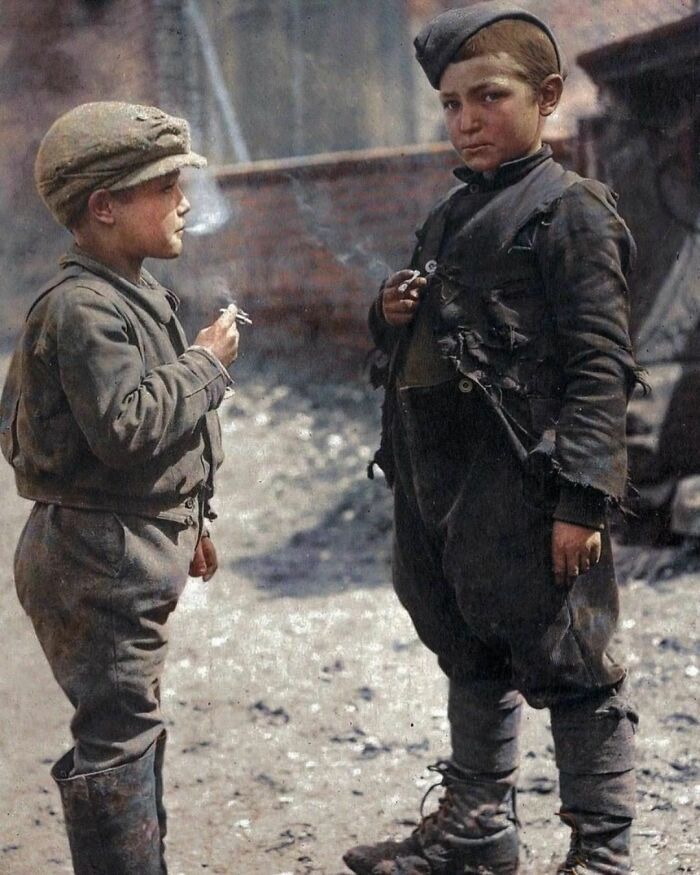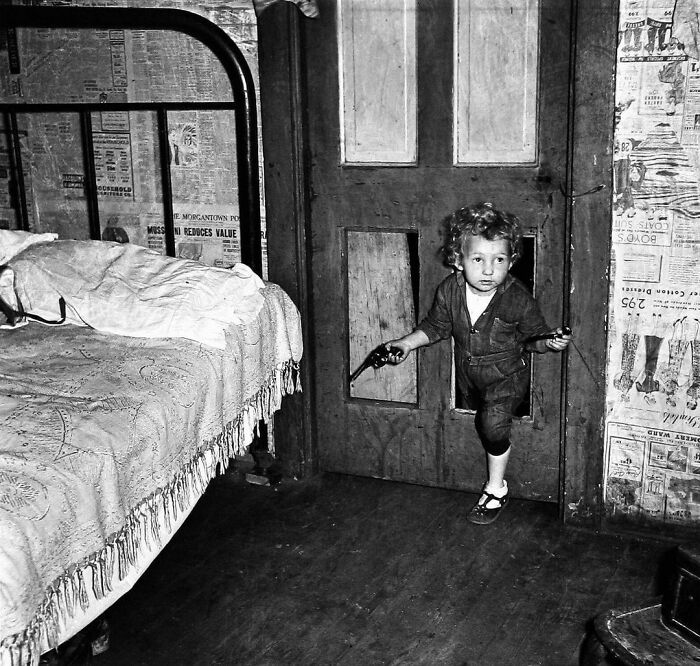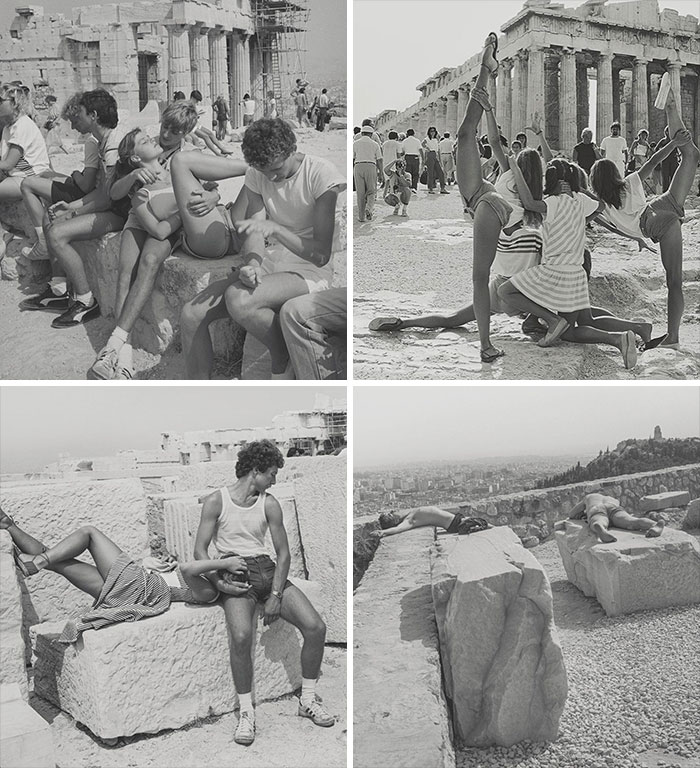Learning about history is an important part of understanding the world around us, but it can be daunting to know where to begin. Wouldn’t it be great if someone else curated historical facts in bite sized pieces to give to you every day? Look no further than the History Defined Instagram account! This page shares facts, stories and videos, so followers can “learn weird things about history” every single day just by logging onto Instagram. We’ve gathered some of the most interesting posts from History Defined, so you can have some historical fun facts in your back pocket to share with others. Then if you’re still hungry for more history lessons, we’ve got another Bored Panda piece featuring a similar Instagram page for you to check out next right here
This post may include affiliate links.
Kenyan Runner Abel Mutai Was Only A Few Meters From The Finish Line, But Got Confused With The Signs And Stopped, Thinking He Had Finished The Race
A Spanish man, Ivan Fernandez, was right behind him and, realizing what was going on started shouting to the Kenyan to keep running. Mutai did not know Spanish and did not understand. Realizing what was going on, Ivan Fernandez pushed Mutai to victory.
A reporter asked Ivan, "Why did you do this?" Ivan replied
My dream is that one day we can have some sort of community life where we push ourselves and help each other win." The reporter insisted "But why did you let the Kenyan win?" Ivan replied, "I didn't let him win, he was going to win. The race was his."
The reporter insisted and asked again, "But you could have won!" Ivan looked at him and replied: "But what would be the merit of my victory? What would be the honor of this medal? What would my Mother think of it?"
While Instagram may not be the first place many people go for a history lesson, it’s becoming a popular one. History Defined has amassed 130k followers since its first post in September 2021. It’s probably safe to assume that most users follow the page just for fun, but accounts like this are a great way to show that Instagram can also be used as an educational tool to get students more excited about learning.
We live in a digital age, and we’re just not as likely to pick up a magazine or a book as we are to hop onto the internet. While magazines like National Geographic were once a great way for readers to pick up interesting facts, there are now other more effective platforms. Nat Geo has adapted to our tech-based world and now runs an Instagram account with over 220 million followers. Clearly, there is a demand on social media for learning interesting facts, so History Defined has come along at the perfect time.
This Is Shavarsh Karapetyan, A Retired Armenian Swimmer
In 1976, he had just completed a 26 km (16 mile) run when he heard a loud crash. A trolleybus had lost control and had fallen into a reservoir. It was 25 meters (82 ft) off-shore and had sunk to a depth of 10 meters (33 ft).
Karapetyan immediately dived into the sewage-infested waters and managed to kick the back window of the trolleybus with his legs, despite zero visibility from the silt that had risen from the bottom. Of the 92 passengers onboard, Karapetyan pulled out 46 people. 20 of whom survived.
The combination of cold water and the multiple lacerations from glass shards led him to be hospitalized for 45 days. He developed pneumonia and sepsis. While he was able to recover, damage to his lungs prevented him from continuing his career as a swimmer.
"I knew that I could only save so many lives, I was afraid to make a mistake. It was so dark down there that I could barely see anything. One of my dives, I accidentally grabbed a seat instead of a passenger. I could have saved a life instead. That seat still haunts me in my nightmares," he said.
In 1985, Karapetyan came upon a burning building with trapped people inside. He rushed in and began pulling people out. He was badly burnt and had to once again be hospitalized.
Later in life, he moved to Moscow and founded a shoe company called “Second Breath”. He is still alive today and continues to run his business.
In 1996, Binti Jua, An 8-Year-Old Female Western Lowland Gorilla, Tended To A 3-Year-Old Boy Who Had Fallen Into Her Enclosure At The Brookfield Zoo In Illinois
The child had climbed the wall and fallen 24 feet (7.3m), breaking his hand and receiving a large gash on his face. Binti walked over and cradled the boy in her arms. She carried him over to the service entrance and handed him over to her zookeepers. Her 17-month old baby, Koola, clutched her back throughout the whole ordeal.
For many months after the incident, Binti received special treats and food from her caretakers and drew in huge crowds. She is still alive today at 33-years-old and has three granddaughters and one great-grandson.
One professor, Dr. Michael W. Kirst of Stanford University, even recommends utilizing Instagram in the classroom. On his blog The College Puzzle, Dr. Kirst writes that because Instagram is one of the most popular social media sites for young people, with 72% of teens using it, it makes sense to try to use it for educational purposes as well. Students are already spending time scrolling through the app, so they might as well learn something new while they’re at it.
Dr. Kirst mentions that Instagram also helps develop creativity, as users are always trying to think of new ideas for posts. Students also prefer unique methods of studying, including assignments that can be evaluated through Instagram or attending events that students can share about via Instagram. They’ll certainly find posting on social media more interesting than simply writing and submitting an essay. If you’re looking for more educational accounts to follow, NASA Goddard, The Smithsonian, The American Museum of Natural History and The British Library all run active Instagram pages as well.
In 1996, A Newborn Baby Girl Was Left In A Garbage Can Near The City Of Kolkata, India. Three Friendly Street Dogs Discovered And Protected Her For Nearly Two Days, Even Attempting To Feed The Child Before Authorities Were Contacted And The Young One Was Saved
In 1912, Jim Thorpe, A Native American, Had His Running Shoes Stolen On The Morning Of His Olympic Track And Field Events.
He found this mismatched pair of shoes in the garbage and ran in them to win two Olympic gold medals that day.
He was also the first Native American to win a gold medal for the United States.
Three Jewish Men Who All Survived The Auschwitz Concentration Camp And Were Liberated On The Same Day, Reunite 73 Years Later, 2019
All these men survived the camp and their tattoos have the difference of the number 10, meaning they were all in the camp at the same time. All these men went onto have families and good lives.
It still amazes me to this day that there are people alive who deny the Holocaust happened! 😥
Maybe you’re not so interested in learning about history, and you need to be convinced as to why it might be a good idea to follow History Defined. Well, according to the Department of History at the University of Wisconsin, “Studying history helps us understand and grapple with complex questions and dilemmas by examining how the past has shaped (and continues to shape) global, national, and local relationships between societies and people.” No, you don’t need to go and get a degree in history. But wouldn’t it be nice to have a greater perspective on our world by knowing more about the past?
The Lady Circled In Red Was Lucy Higgs Nichols. She Was Born Into Slavery In Tennessee, But During The Civil War She Managed To Escape And Found Her Way To 23rd Indiana Infantry Regiment Which Was Encamped Nearby. She Stayed With The Regiment And Worked As A Nurse Throughout The War
After the war, she moved north with the regiment and settled in Indiana, where she found work with some of the veterans of the 23rd. She applied for a pension after Congress passed the Army Nurses Pension Act of 1892 which allowed Civil War nurses to draw pensions for their service.
The War Department had no record of her, so her pension was denied. Fifty-five surviving veterans of the 23rd petitioned Congress for the pension they felt she had rightfully earned, and it was granted.
The photograph shows Nichols and other veterans of the Indiana regiment at a reunion in 1898. She died in 1915 and is buried in a cemetery in New Albany, Indiana.
Meet Margaret Hamilton, The Woman Who Took Mankind To The Moon. She Is Standing Beside The Code She Created To Program The Computer Systems On The Apollo 11 Spacecraft, 1969
Hamilton created the basic concept of modern-day software and her programming was so successful and effective that it was just as important as the astronauts aboard the spacecraft itself. After getting her degree in mathematics she is considered to be the first software engineer, a term which she created.
Despite her role being one of the most important in the entire apollo mission, she was not credited as much as she should have been.
Before she worked for NASA, she programmed software for the US airforce to detect enemy aircraft. She also made software for tracking satellites and to predict the weather.
She took mankind to the moon and back.
Fun fact: the device you are using to view this post (most likely a smartphone) has over a million times more computer power than the spacecraft that took us to the moon. Let that sink in what kind of computer power you are currently holding in your hand!
"she was not credited as much as she should have been" - the reason for that is because she was a woman Scientist. Sexism was and still is around today unfortunately.
Albina Mali-Hočevar Was A Slovenian Fighter Who Was Wounded In Combat Several Times During Ww2
She joined the People's Liberation Movement at 16.
She was wounded twice at 17.
She was wounded again by an exploding mine three days after her 18th birthday.
She continued fighting and working as a nurse for the rest of the war.
She lived until the age of 75.
The past teaches us about the present as well. We can analyze issues that occurred in the past, and use our understanding of those events to solve current and future problems. For example, the University of Wisconsin’s website notes that, “A course on the history of public health might emphasize how environmental pollution disproportionately affects less affluent communities – a major factor in the Flint water crisis. Understanding immigration patterns may provide crucial background for addressing ongoing racial or cultural tensions.” History can also help us build empathy through studying the lives and struggles of others. It’s easy to live in a bubble, but when we step outside of our own experiences and learn about others, we value and appreciate their lives and cultures more.
A Train Of Jewish Prisoners Intercepted By Allied Forces.
In this photo, they then realized that the train would not be heading to a Concentration Camp, they had been liberated.
Taken on April of 1945, by Major Clarence Benjamin.
A Father Looking For His Two Missing Sons That Went Missing During The War, Mitrovica, Kosovo, 1999
Mustafa Xaja, shows two of his sons photos who he fears were killed by Serbs, he had just recently been released from a Serbian prison, and was forced to cross over the border with Albania. Later, he found out his sons were safe.
A Couple At Woodstock Only 48 Hours After They Met And The Same Couple 50 Years Later, Happily Still Together
History can also teach us more about ourselves. When we learn about our ancestors, we have a greater understanding of our own lives. For example, knowing where our ancestors lived and what major events they lived through helps us piece together how we got here. On that same note, the University of Wisconsin’s site compares “doing history” to “completing a puzzle or solving a mystery”. “Imagine asking a question about the past, assembling a set of clues through documents, artifacts, or other sources, and then piecing those clues together to tell a story that answers your question and tells you something unexpected about a different time and place. That’s doing history.”
Bobbi Gibb, First Woman To Run The Boston Marathon In 1966, She Ran Without A Number Because Women Were Not Allowed Into The Race
This Photo Shows Dr. Zbigniew Religa Keeping Watch On The Vital Signs Of A Patient After A 23 Hour Heart Surgery He Conducted In 1987
In the lower right corner, you can see one of his colleagues who helped him with the surgery asleep. Dr. Religa was a pioneer of heart transplantation in Poland, and even though the surgery was considered borderline impossible at the time, he took the chance, and the operation was entirely successful. The patient in the photo would go on to outlive Dr. Religa.
East German Soldier Helps A Little Boy Sneak Across The Berlin Wall The Day It Was Erected In 1961. The Boy Had Been Left Behind In The Chaos Of People Fleeing To Be With Their Families On Either Side Of The Wall
While history may be deemed a boring subject by many students in their school days, it’s understandable that people are eating up these fun facts and stories on Instagram. We love true stories (just look at how popular documentaries have become in recent years), and our brains get excited about learning new information, even if we don’t realize it. In the case of the History Defined Instagram account, followers are in luck if they want to recall what they’ve read. 65% of people consider themselves visual learners, so having interesting images and videos associated with the information shared on Instagram makes us more likely to remember what we’ve read.
“My Uncle Getting Caught Growing Weed In The Backyard." - 1970s
Billed As "The Sheep-Headed Men," "The White Ecuadorian Cannibals Eko And Iko," And "The Ambassadors From Mars,” George And Willie Muse Were World-Famous Sideshow Performers In The Early 1900s. But Even Their White Audiences Hardly Knew The Horrors Of Their Story
Born Black with a rare form of albinism, they were targeted by a traveling "freak hunter" when they were just boys and kidnapped from their Virginia home. Then they were forced to grow out their hair and sold to a series of traveling sideshows, including Ringling Bros. They weren’t allowed to go to school or learn to read, and they never saw a dime, though their handlers made a fortune off of them. They were even told that their mother was dead so that they would stop begging to go home.
Their years of enslavement finally ended in 1927 when Ringling Bros. found its way back to Roanoke and George recognized their mother in the crowd. "There's our dear old mother," he said. "Look, Willie, she is not dead."
Members Of The Polish Resistance During World War 2, Then To Now. The Polish Resistance Played A Major Role In The Warsaw Polish Uprising 1944
Polish Warsaw Uprising participants, AK on their shoulders standing for Armia Krajowa (Polish army). Polish Warsaw Uprising started 1st August 1944, lasted 63 days, 18 thousand Polish soldiers and 200 thousand of civilians were killed, some in mass murders.Then the city was distroyed, burnt down methodically by German troops with Soviet army waiting on the other bank of the Wisla river, waiting for them to finish up.
There’s a valid reason so many people prefer visual learning. According to Dr. Lynell Burmark, education consultant and author of the book Visual Literacy: Learn to See, See to Learn, “Unless our words, concepts, ideas are hooked onto an image, they will go in one ear, sail through the brain, and go out the other ear. Words are processed by our short-term memory where we can only retain about seven bits of information (plus or minus 2). Images, on the other hand, go directly into long-term memory where they are indelibly etched.”
Arnold Schwarzenegger With Wilt Chamberlain And Andrè The Giant On The Set Of Conan The Destroyer, 1983
In 1990, An Improperly Installed Window On British Airways Flight 5390 Fell Off During Midflight Causing Rapid Decompression In The Cockpit
Flight attendant Nigel Ogden just happened to be entering the cockpit when he heard the loud bang and saw the pilot getting sucked out. In the reenactment image, you can see Ogden holding on to his legs, while the co-pilot is trying to rapidly descend in order to reach a safer altitude.
As the co-pilot attempted to contact air traffic control to make an emergency landing, Ogden was starting to develop frostbite from the severe cold. Most of the crew thought the pilot was already dead, but Ogden continued to hold on. There was also the fear that if he did let go, the body might collide with the plane's engine, wing or stabilizer, creating more havoc. All he knew for sure was that the pilot was slipping further and further out the window and his head was repeatedly slamming against the fuselage.
After 15 minutes of flying with a broken window, the plane landed safely at Southampton Airport. Ogden suffered frostbite on his face and damaged one of his eyes; he also dislocated his shoulder. The pilot miraculously survived with frostbite and multiple fractures on his arms and hands.
An investigation later revealed that the window that had been newly installed just 27 hours before the flight had used incorrect bolt sizes. Of the 90 bolts that were used, 84 of them were 0.026 inches (0.66 mm) too small in diameter. The other 6 bolts had the correct diameter, but were short by 0.1 inches (2.5 mm). The bolts were supposed to be 0.8 inches, not 0.7 inches.
The pilot and the cabin crew had all worked together before and were good friends - Ogden wasn't alone in keeping his captain from falling further out of the window. The co-pilot was a comparative outsider, who then had to fly the plane by himself with no flight plan, to an unfamiliar airport, unable to hear ATC because of the wind in the cockpit. The images here are taken from (depending on your country) Mayday!/Air crash investigation
The 15 Year Old Girl Who Remained Frozen On Top Of A Mountain For 500 Years, 2007
Our brains also register images incredibly fast. After seeing a picture for only 13 milliseconds, our brains can understand what we saw. 90% of information transmitted to the brain is also visual. When we see these interesting photos and videos on History Defined, we have a greater chance of remembering what we read than if someone had only told us the same information or if we had seen it in a book without any visual components.
Shirley Slade Was One Of More Than 1000 Women Who Had Been Solicited By The U.S. Government To Enter An Intensive Seven-Month Training Course That Would Make Them The First Female Pilots To Enter The Air Force
Severe pilot shortages of World War II led to the recruitment of women into the Air Force. By recruiting women, the Air Force could maintain delivery of aircraft, ferry supplies, and perform other non-combative functions that fueled the war efforts.
Collectively, the group would become known as WASPs: Women Airforce Service Pilots.
As the war wound down, men returning from combat took the WASPs' places as active-duty pilots.
Slade was trained to fly the B-26 and B-39.
Photo of Casey Drabble for Men’s File Magazine.
A Lighter Depicting The Tough Circumstances Of The Vietnam War. The Voting Age During This Time In America Was 21, While The Age To Enlist (Or Get Drafted) Was 18. In 1971, President Nixon Passed The 26th Amendment Which Lowered The Voting Age To 18
Portrait Of A “Mestiza De Sangley," Philippines, 1875. Photo By Francisco Van Camp
Learning about history makes us more informed about our world and all the people in it. History Defined does a great job of finding some of the most fun facts from history and passing them along to wider audiences. We all know who Abraham Lincoln is, but seeing a photo of him is exciting. And how many people have seen a picture of teenagers swooning over Elvis Presley at one of his concerts in 1957? It may seem like a simple photo, but it provides us insight into the culture at that time. And it’s a reminder that teenagers have always and will always love going to see their favorite musicians live. History Defined is full of fun images providing us insight into specific moments in the past.
The 4000-Year-Old Skeletons Of A Mother Who Was Trying To Shield Her Child From A Massive Earthquake That Struck China In 2000 Bc And Triggered Massive Floods, In An Event That Is Sometimes Referred To As ‘China’s Pompeii’. Now Located At The Lajia Ruins Museum In Northwest China
Two Young Soldiers Pose For A Candid Photo In Austria, 1945
In 1945, these two soldiers had hiked up into the Austrian Alps and a friend took their picture as they embraced in the snow.
One soldier kept these snapshots hidden in a shoebox until the early 1990s when he handed them to a relative, along with the ring that he was wearing in the Alps photo, with the request: “Please keep these safe for me.”
According to the relative, the soldier, nearing the end of his life, wanted to preserve the one thing that meant more to him than anything else. He passed away two years later.
Mountain Chief Listening To A Song Being Played On A Phonograph And Interpreting It In Plains Native American Sign Language To Ethnomusicologist Frances Densmore In 1916
Densmore’s aim was to preserve Native languages and cultures for future generations. Currently, only 75 people in the world are reported to use the Plains Native American Sign language.
I think this list is a perfect example of how great learning about history can be, especially when we're not in middle school being forced to memorize information just for exams. We hope you enjoy the rest of these fascinating stories and images and that you learn at least a few fun facts from it. Don’t forget to upvote the posts you found most interesting, and let us know in the comments what little-known history facts you think should be featured on the page. And if you'd like to continue your journey of learning about history, be sure to go follow History Defined on Instagram.
U.S. Army Technician Alvin Harley Of The 9th Armored Division Receives A Kiss From A Liberated French Girl On Saint Valentine’s Day. Abancourt, Oise, Picardy, France. February 14, 1945
Jenny Joseph Modeling For The Columbia Pictures Logo, 1992. She Had Never Modeled Before, And Never Did Again
Hippy High School Fashion In The 1960s
Clothes were so colorful and unique then. If any doubts about your wardrobe style, just pop it in the closet for 10yrs or so it'll be back in style
Goofing Around Before Going To The Ww1 Front, 1914
"My great grandfather goofing around before he headed to the front. He died on his first day of combat, just four days after he was mobilized” via reddit u/enraged-elephant.
Undine Rising From The Waters (1880) By Chauncey Bradley Ives
"According to medieval lore, undines were Mediterranean sea spirits who lived as soulless mortals. In the nineteenth century, this story gained prominence through Baron Heinrich Karl de la Motte Fouqué’s popular novel Undine, in which a water spirit gains a human form and soul by marrying the mortal knight she loves. When her husband proves unfaithful, the laws of the water spirits force her to kill him. Chauncey Bradley Ives depicts the moment when the mournful Undine, cloaked in a white veil, rises like a fountain to claim her husband’s life. Exquisitely rendered, the diaphanous wet drapery is a masterful example of illusionistic carving." - Yale University Art Gallery
Belgian Coal Miners Crammed In An Elevator At The End Of A Long Day Of Work. 1900
A Teacher Teaching The Physics Of Surfing, California, 1970
Woman Going Through An Attitude Adjustment Program, 1930s
Women suffering from depression or demonstrating signs of “misbehavior”, such as not “taking proper care of her husband” were legally encouraged to submit into a psychiatric ward.
Here, the narrow-minded 1930s would offer a smiling treatment used to condition a woman into always wearing a smile. Experts believed that if a woman saw herself smiling, it would become natural practice and she would be “cured.” This often went along with shock therapy.
Corporal Jackie Was A Baboon In The South African Army During World War I. He Was The Official Mascot Of The 3rd Transvaal Regimen When His Owner, Albert Marr Was Drafted Into War, And Would Not Leave Jackie At Home. He Asked His Superiors If Jackie, Too, Could Join The Army And They Said Yes
So Jackie was given an official style uniform with a cap, a ration set, and his own pay book. Jackie would salute to superior officers and light soldiers' cigarettes. He would even stand at ease in the style of a trained soldier.
Due to his heightened senses, Jackie was useful to sentries on duty at night. The baboon would be the first to know when an attack was coming or enemy soldiers were moving around nearby.
Jackie and Marr survived a battle where the casualty rate was 80%, in Delville Wood, early in the Somme Campaign.
When Marr was serving in Egypt he was shot in the shoulder at the Battle of Agagia, 26 February 1916, while Jackie was with him, licking the wound as they awaited help.
Jackie was given his own rations while with the army, and ate them with his own knife and fork, as well as his own washing basin.
When the regiment was drilled and marched, Jackie would be with them.
Jackie spent time in the trenches in France where he tried to build a wall around himself during extreme enemy fire, but a piece of shrapnel from an explosion flew over the wall hitting Jackie in the leg and arm.
When stretcher bearers tried to take Jackie away he refused, desperate to finish his wall and hide. Doctors treated Jackie's wounds, but they decided his leg had to be amputated and were surprised that he even survived.
Jackie was awarded a Medal of Valor for the event of his injuries, and promoted from private to corporal. After the war was over, Jackie was discharged with papers and went back to South Africa. He tragically died in a house fire in 1921.
A Couple Take A Mirror Selfie Together, 1940s
A Young Boy Takes A Final Puff Of His Cigarette Before Facing The Consequences After He Stole His Father's Car And Crashed It, 1974
Michelangelo's Moses Is A Marble Sculpture Made In 1513–15
One of the many details of this masterpiece is one very small muscle in the forearms that contracts only when lifting the pinky, otherwise it is invisible. Moses is lifting the pinky, therefore that tiny muscle is contracted.
Giorgio Vasari in the Life of Michelangelo wrote: "Michelangelo finished the Moses in marble, a statue of five braccia, unequaled by any modern or ancient work. Seated in a serious attitude, he rests with one arm on the tables, and with the other holds his long glossy beard, the hairs, so difficult to render in sculpture, being so soft and downy that it seems as if the iron chisel must have become a brush. The beautiful face, like that of a saint and mighty prince, seems as one regards it to need the veil to cover it, so splendid and shining does it appear, and so well has the artist presented in the marble the divinity with which God had endowed that holy countenance. The draperies fall in graceful folds, the muscles of the arms and bones of the hands are of such beauty and perfection, as are the legs and knees, the feet were adorned with excellent shoes, that Moses may now be called the friend of God more than ever, since God has permitted his body to be prepared for the resurrection before the others by the hand of Michelangelo. The Jews still go every Saturday in troops to visit and adore it as a divine, not a human thing."
The English translation of Sigmund Freud's "The Moses of Michelangelo" also provides a basic description of the sculpture: "The Moses of Michelangelo is represented as seated; his body faces forward, his head with its mighty beard looks to the left, his right foot rests on the ground, and his left leg is raised so that only the toes touch the ground. His right arm links the Tables of the Law with something that looks like a book in the right palm of his hand with a portion of his beard; his left arm lies in his lap."
The attention to detail is impeccable.
The horns are a mistranslation. The exposure to God was said to make Moses face give off rays of light. The translation error changed this to "horns" so Moses is sculpted as having horns.
Jewish German Army Soldiers Celebrate Hanukkah On The Eastern Front, 1916
During World War II Those Spying On Behalf Of The Allies Had To Go Through Considerable Trouble In Order To Make Sure That They Weren’t Discovered By The Nazis While Securing Axis Secrets
Aside from going out of their way to disguise their appearance as much as possible, which involved the perfect type of clothing that didn’t make them look too English, they sometimes had to resort to trick shoes like this to throw Nazi forces off their tracks. These shoes work similarly to those employed by moonshiners during prohibition (which were likely the inspiration), the soles faced the opposite direction that the wearer was walking, making anyone tracing their footsteps believe that the wearer was walking towards them rather than away.
I have wide feet, so those look like they'd probably be like foot binding for me.
Lebanon Pre-Civil War, Byblos, 1965. Photo By Raymond Depardon
Portraits Of Ellis Island Immigrants By Augustus Sherman, Circa 1905-1914
Sherman worked as a clerk on Ellis Island from 1892 to 1925. During his breaks, he would ask newly arrived immigrants to sit for an intimate portrait. In total, he took around 200 photos.
Ellis Island was active for more than 60 years, from 1892 to 1954. During that time, more than 12 million people passed through, often escaping political and social turmoil back home. Others came seeking a better life and a fresh start in the so-called land of opportunity.
The poor woman with the baby - I don't think she quite recovered from that birth. (Before I get down voted, I'm not trying to be snarky. I'm just amazed, to be honest).
An Indian Student Studying Late At Night At The University Of Madras In Tamil Nadu, 1905
Students use to tie their hairs to a nail in the wall to prevent themselves from falling asleep while studying late at night.
André The Giant On A Plane Traveling To Japan, 1980
Breaker Boys At The Woodward Coal Mines In Kingston, Pennsylvania, Ca. 1900
Breaker boys worked in the coal mines. Their main job was to separate chunks of coal by hand. As coal came down the conveyor belt, they would break up the coal into common sized pieces and also separate out any things like rocks, clay and soil. Boys were usually between the ages of 8 to 12, but sometimes were as young as 5 or 6. The breaker boys would work 10 hours a day, 6 days a week.
A German Woman Sitting Alone With Her Dog And All Her Belongings In The Ruins Of Cologne, 1945
He Cast Who Played Ewoks In The Return Of The Jedi
A German Coal Miner Waiting To Get Into The Communal Shower At The End Of A Long Shift, 1958
In 1731 King Frederick I Of Sweden Sent A Taxidermist His Favorite Lion Who Had Died And This Is What He Received Back. King Frederik's Lion Is On Display To This Day At Gripsholm Castle, A Former Royal Residence And Now A Museum In Mariefred, Södermanland, Sweden
Based on some of these pictures....is it really any wonder why we are living in a society where so many people are broken having been raised by clearly broken individuals who themselves were expected to live in some horrendous conditions and passed on that terrible legacy......
I sure wish they had included some important pieces of information for more of these. I'm sure that Indian chief had a name.
Every subsequent society has grown weaker and self absorbed. Humanity needs to stop being victims and start becoming grown a*s adults able to lead.
Based on some of these pictures....is it really any wonder why we are living in a society where so many people are broken having been raised by clearly broken individuals who themselves were expected to live in some horrendous conditions and passed on that terrible legacy......
I sure wish they had included some important pieces of information for more of these. I'm sure that Indian chief had a name.
Every subsequent society has grown weaker and self absorbed. Humanity needs to stop being victims and start becoming grown a*s adults able to lead.

 Dark Mode
Dark Mode  No fees, cancel anytime
No fees, cancel anytime 




